

|
 |
To Live and Die in L.A. (Blu-ray)
[Blu-ray]
Blu-ray B - United Kingdom - Arrow Films Review written by and copyright: Paul Lewis (27th November 2016). |
|
The Film
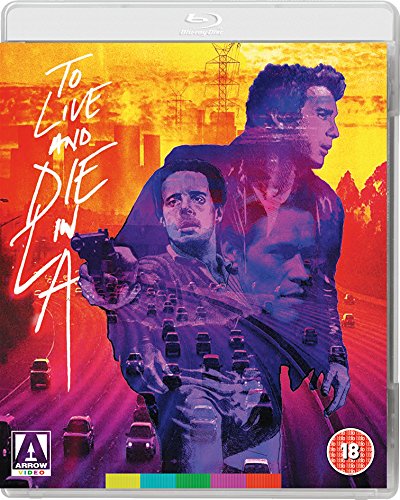 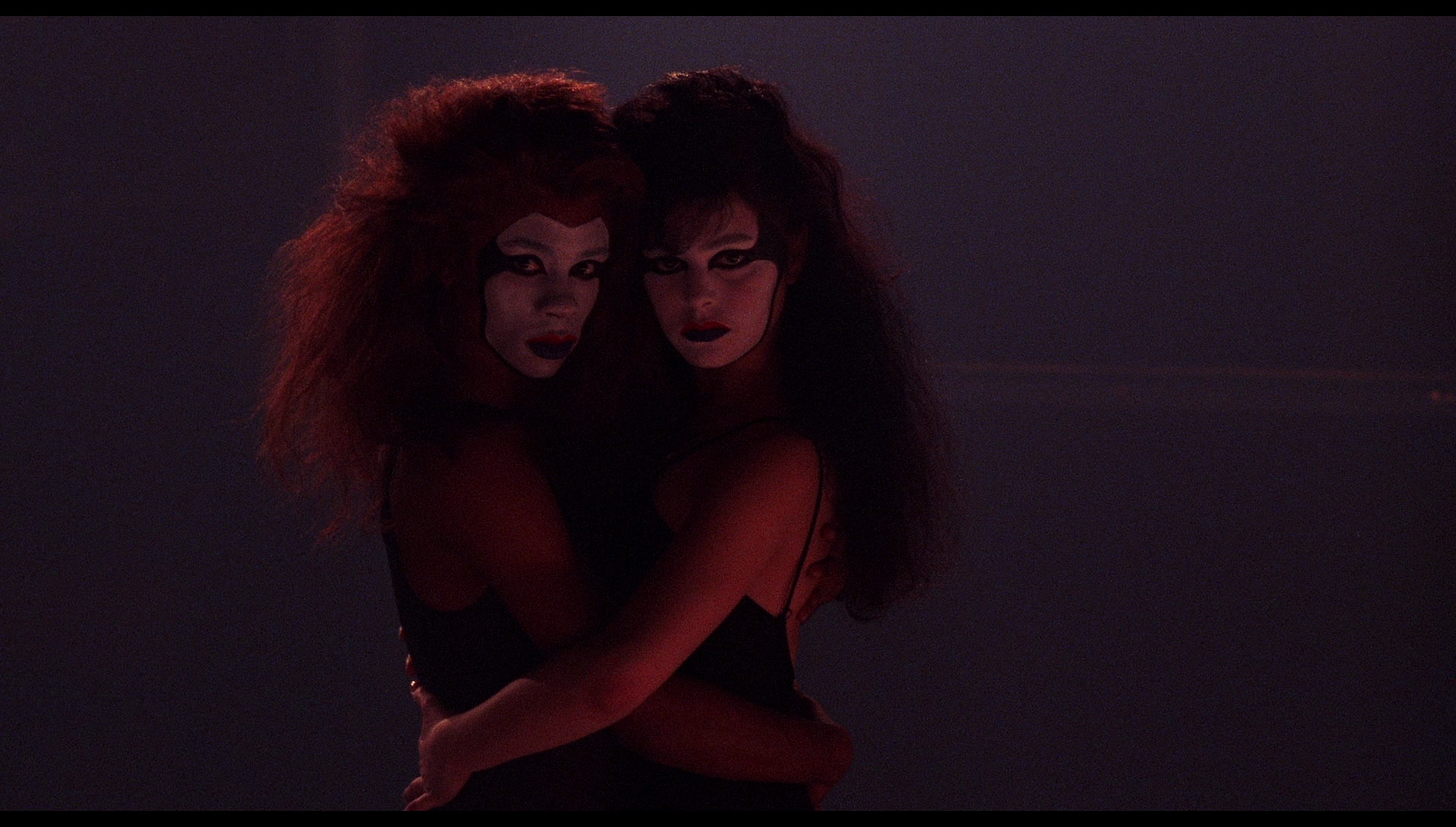 To Live and Die in L.A. (William Friedkin, 1985) To Live and Die in L.A. (William Friedkin, 1985)
Following the brutal death of his partner Jim Hart (Michael Greene), who was mere days from retirement, at the hands of counterfeiter Rick Masters (Willem Dafoe), US Secret Service agent Richard Chance (William Petersen) vows to ‘bag’ Masters. Chance is given a new rookie partner, John Vukovich (John Pankow). Working together, Masters and Vukovich snare Cody (John Turturro) at an airport. Cody has been moving ‘paper’ (counterfeit money) for Masters and is fleeing the city. Some of that ‘paper’ has gone missing, and initially Masters believes Cody to have stolen it; but when Masters visits Cody in prison, Cody tells Masters that the last client of Masters that Cody visited, Max Waxman (Christopher Allport), seems to have stolen the ‘paper’ and deflected blame onto Cody. However, Masters still expresses doubts to his attorney Bob Grimes (Dean Stockwell) about Cody, suggesting that ‘He can’t do it [the time]. He’ll cave in on me’. Meanwhile, Chance also visits Cody in jail and suggests that he (Chance) will engineer a pardon for Cody if he will help Chance ‘bag’ Masters. Cody refuses. Chance and Vukovich stake out the home of Maxwell, knowing that he is associated with Masters. However, using his lover Bianca (Debra Feuer) as a ‘honey trap’ Masters manages to sneak in to Maxwell’s home via the back door. He interrogates Masters before executing him in cold blood. Chance and Vukovich arrive on the scene too late to catch Masters. Chance takes from the crime scene a notebook containing ‘some kind of dealer’s code’. Vukovich criticises Chance’s decision to take a valuable piece of evidence from a crime scene, but Chance chides his partner for his obsession with playing by the rules. 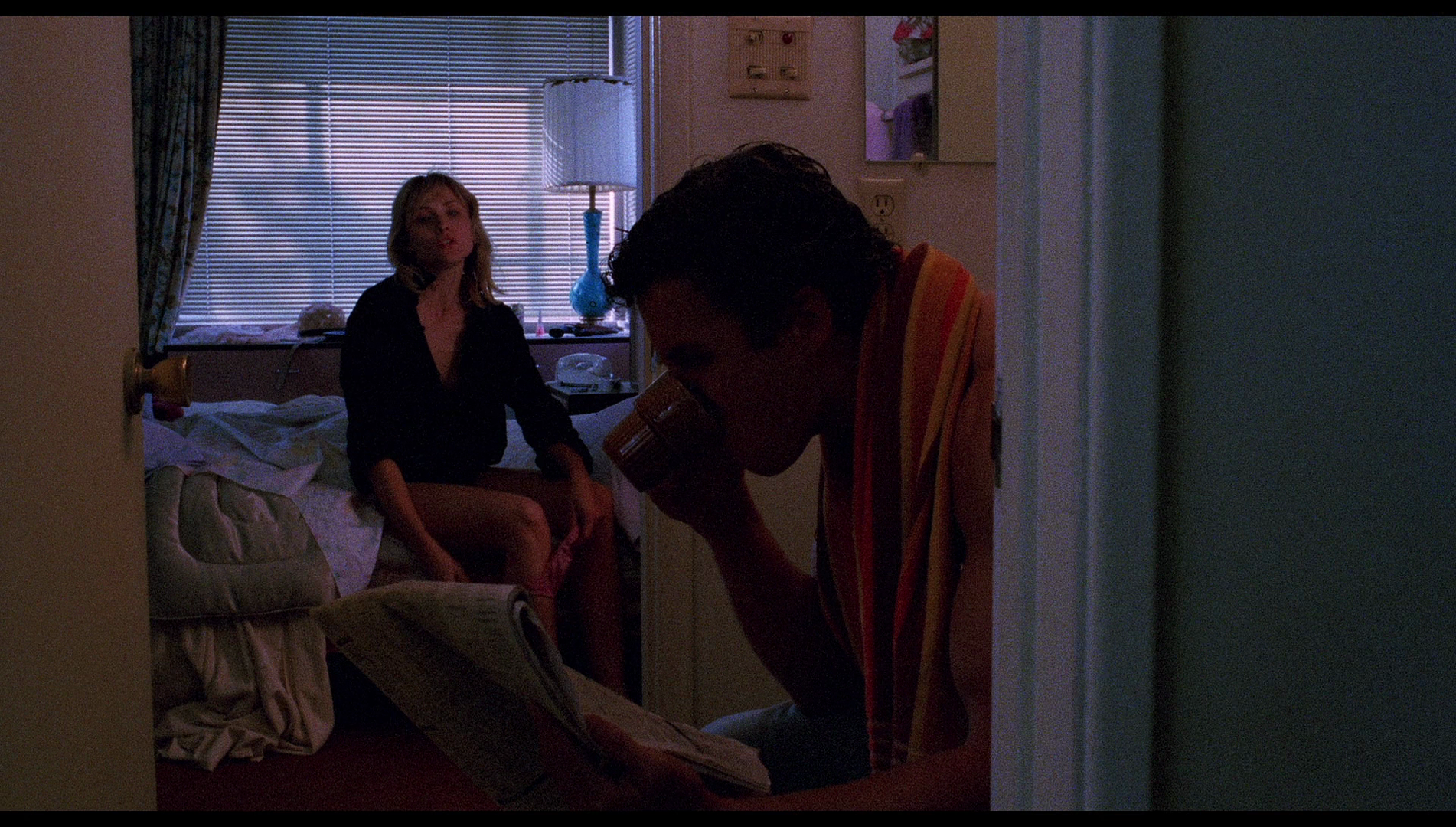 After Masters commissions an associate, Jeff (Steve James), to have an attempt made on Cody’s life whilst he is exercising in the prison yard, Cody decides to accept Chance’s offer and promises to testify in open court in exchange for his freedom and protection from Masters’ crew. Chance is initially turned down by Judge Cedillo (Val DeVargas) but manages to persuade the judge to allow Cody to be released – on the proviso that Chance doesn’t lose Cody. However, Cody gets the jump on Chance and escapes, humiliating Chance. After Masters commissions an associate, Jeff (Steve James), to have an attempt made on Cody’s life whilst he is exercising in the prison yard, Cody decides to accept Chance’s offer and promises to testify in open court in exchange for his freedom and protection from Masters’ crew. Chance is initially turned down by Judge Cedillo (Val DeVargas) but manages to persuade the judge to allow Cody to be released – on the proviso that Chance doesn’t lose Cody. However, Cody gets the jump on Chance and escapes, humiliating Chance.
Vukovich is approached by Bob Grimes, who suggests he has become alienated in his work as a defence attorney and tells Vukovich that Masters threatened him (‘The man’s an animal’, Grimes asserts). Grimes sets up a meeting between Masters, Chance and Vukovich, with Chance and Vukovich masquerading as out-of-town businessmen willing to buy Masters’ ‘paper’. However, Masters will only make the sale if Chance and Vukovich can come up with $30,000 – but their boss, Thomas Bateman (Robert Downey Sr) refuses to sanction the use of such a large amount of money in a sting. Acting on information provided by his informant-cum-lover Ruth (Darlanne Fleugel), Chance decides to rob an out of town criminal, a fence for stolen goods. His intention is to take the $50,000 this man is carrying and use it to ensnare Masters. Chance and Vukovich intercept their ‘mark’, Thomas Ling (Michael Chong), at the train station. They take him to an isolated location, in LA’s concrete storm drains, and steal his money. However, they are ambushed; gunshots ring out and Link is killed. In a bravura car chase deliberately intended to ‘one up’ the pivotal car chase in Friedkin’s The French Connection (1972), Chance and Vukovich manage to escape. However, at a debrief at work the next day, Chance and Vukovich learn that Ling was in fact an undercover FBI agent and, though their identities are not known, Chance and Vukovich are wanted for Ling’s murder. The $30,000 in his possession, Chance arranges the handover with Masters, with deadly consequences. 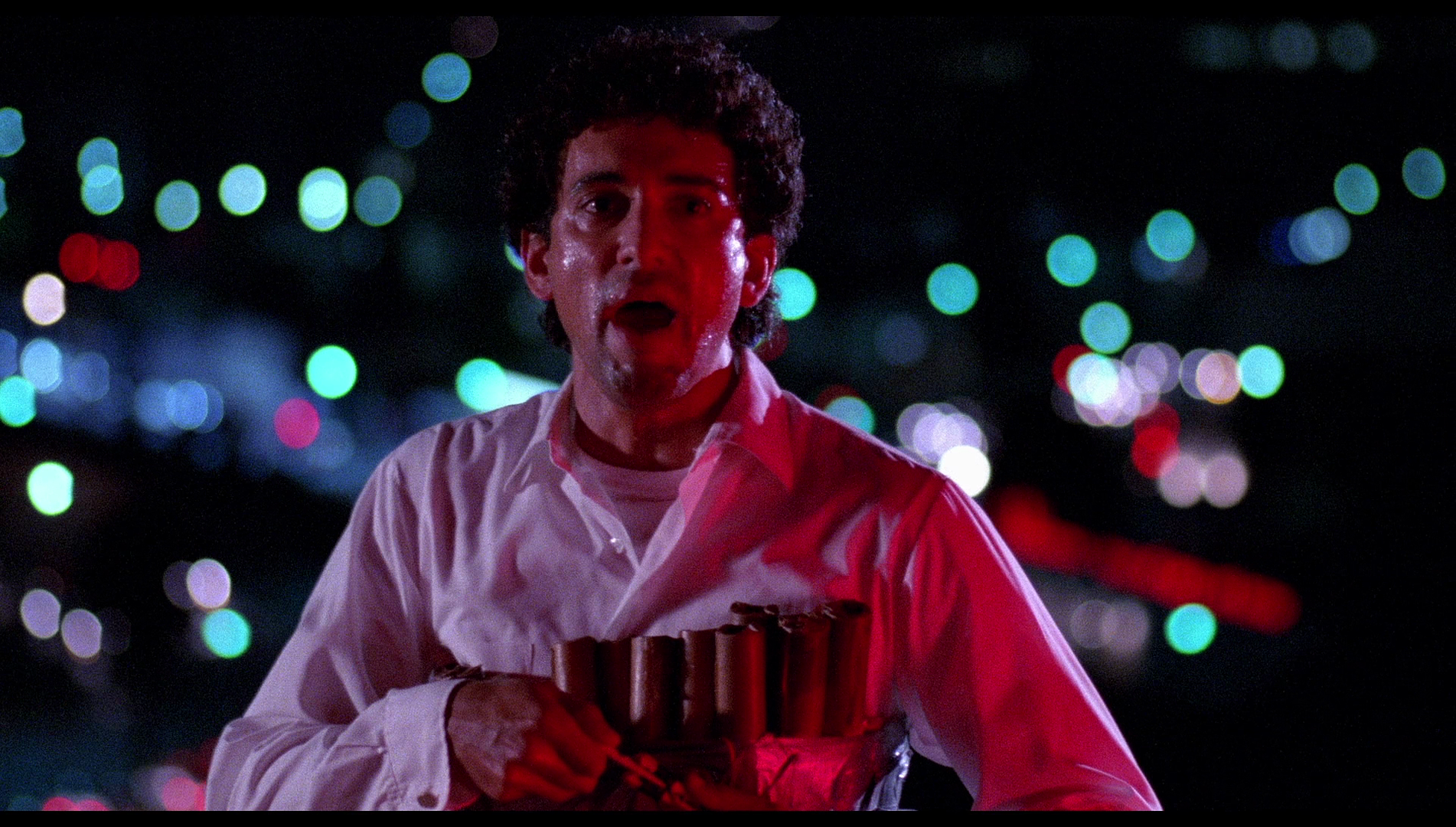 William Friedkin’sTo Live and Die in L.A. (1985) was one of a spate of neo-noir pictures made during the 1980s, a decade that began its neo-noir credentials with more classical film noir paradigms (the period settings and femmes fatales of Lawrence Kasdan’s Body Heat, 1981, and Bob Rafelson’s remake of The Postman Always Rings Twice, also 1981) but which, arguably through the influence of the iconic ‘MTV cops’ television series Miami Vice (1984-9), evolved into a more modern take on noir, with many of the neo-noir pictures made during the late 1980s becoming neon-drenched films about corrupt cops. To Live and Die in L.A. was released within a year of both John Frankenheimer’s Elmore Leonard adaptation 52 Pick-Up (1986, recently released on Blu-ray by Arrow and reviewed by us here), Michael Mann’s Manhunter (1986) and Hal Ashby’s adaptation of Lawrence Block’s novel 8 Million Ways to Die (1986). Critic David Denby drew a connection between Friedkin’s film and the neo-noir pictures made by Frankenheimer and Ashby in the same year, suggesting that together, these three films offered a ‘flourishing new Los-Angeles-eats-dirt genre. In that city, we are told, life is nasty, brutish and short’ (Denby, 1986: 108). William Friedkin’sTo Live and Die in L.A. (1985) was one of a spate of neo-noir pictures made during the 1980s, a decade that began its neo-noir credentials with more classical film noir paradigms (the period settings and femmes fatales of Lawrence Kasdan’s Body Heat, 1981, and Bob Rafelson’s remake of The Postman Always Rings Twice, also 1981) but which, arguably through the influence of the iconic ‘MTV cops’ television series Miami Vice (1984-9), evolved into a more modern take on noir, with many of the neo-noir pictures made during the late 1980s becoming neon-drenched films about corrupt cops. To Live and Die in L.A. was released within a year of both John Frankenheimer’s Elmore Leonard adaptation 52 Pick-Up (1986, recently released on Blu-ray by Arrow and reviewed by us here), Michael Mann’s Manhunter (1986) and Hal Ashby’s adaptation of Lawrence Block’s novel 8 Million Ways to Die (1986). Critic David Denby drew a connection between Friedkin’s film and the neo-noir pictures made by Frankenheimer and Ashby in the same year, suggesting that together, these three films offered a ‘flourishing new Los-Angeles-eats-dirt genre. In that city, we are told, life is nasty, brutish and short’ (Denby, 1986: 108).
The film begins with Chance and his partner Jim working as part of the security team for President Reagan, ensuring that the hotel in which Reagan is delivering his speech is ‘clean’ before being confronted by an Islamist terrorist disguised as an employee of the hotel. We know that the president they are protecting is Reagan because, as the agents ‘clear’ the hotel we hear Reagan’s 1985 speech on tax reform (‘Death and taxes may be inevitable, but unjust taxes are not’) being delivered, faintly as if in an auditorium in the background. In the hall outside one of the hotel rooms, Chance talks with another agent about a poker game that’s in play. ‘Is the man [Reagan] gonna play?’, he’s asked. ‘After the speech’, Chance says. (Chance’s personal association with Reagan might seem to make him a cipher for Reaganomics itself, with Chance’s later egomaniacal ‘risky business’ – to use the title of another film that emblematises the decade – functioning as a metonym for the 1980s.) Chance then spots the bogeyman that haunts American films of the 1980s and early 1990s, including pictures such as Roger Young’s 1986 television movie Under Siege and James Cameron’s True Lies (1994): an Islamist terrorist, here disguised as an employee of the hotel. Chance follows this man to the rooftop, where the man expresses his ideological commitment (‘I am ready to die! [….] Death to Israel and America, and all the enemies of Islam!’) and threatens to trigger his suicide vest, before Jim appears at the heels of the terrorist, presumably climbing up from a balcony below, and drags the young man off the roof; the terrorist falls from the building, his suicide vest exploding (offscreen) on the way down as Chance and Jim sit side-by-side, exhausted, Jim exclaiming, ‘I’m getting too old for this shit’. This opening sequence both establishes Jim and Chance’s competence at spotting and handling a dangerous situation, at least when they are working together, and humanises Jim – making his lonely death at the hands of Masters and his goon, who blasts Jim point-blank with a shotgun, impactful for the film’s audience. (The coup-de-grace in the scene depicting Jim’s death is delivered when Masters’ henchman spits on the corpse of Chance’s murdered friend.) 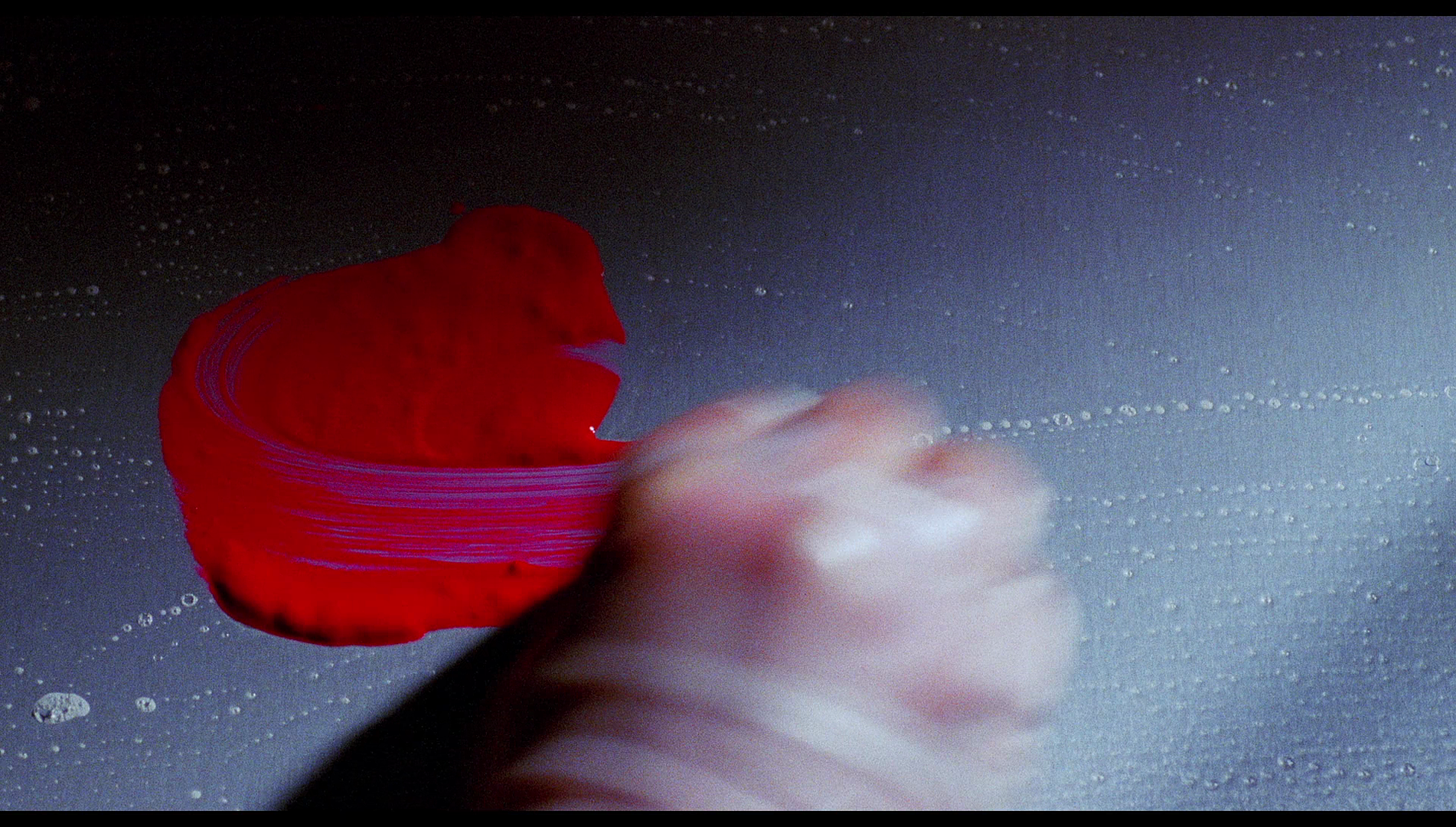 The film is based on Gerald Petievich’s 1983 novel To Die in Beverly Hills. Petievich’s novel was said to have been enriched by his first-hand experience of working as a US Secret Service agent. Whilst Friedkin’s picture deviates noticeably from the source novel, the film was co-scripted by Petievich and sticks fairly close to the novel’s focus on the game of cat-and-mouse between a Treasury Agent and a counterfeiter. (Friedkin and Petievich would work together on the television movie C.A.T. Squad: Python Wolf, in 1988.) Friedking shot To Live and Die in L.A. for under $15 million, almost entirely on location and with a non-union crew. Speaking in an interview published in 2002, Petievich expressed some bitterness about his experiences working with Friedkin. Petievich argued that though To Live and Die in L.A. was, ‘as far as what’s being made now […] pretty good’, it didn’t hold a candle to the films noir of the 1950s, ‘which were all made for $50,000’ (Petievich, quoted in Haut, 2002). Petievich stated that Friedkin ‘insisted on changing scenes and doing things with it so he could get in on the money for the writing of the script, which is what directors do. The reason they want to write the script is they make money from the script [….] It has nothing to do with them wanting to have their input. You see, the auteur theory is bullshit. That was created by some kind of reviewer that doesn’t know anything about the business. It’s like believing a Frank Lloyd Wright house was made great by the general contractor rather than the architect. And in the film business, it’s the writer who’s the architect [….] [M]ovies are not art. When you see something done that’s really great in a movie, it’s usually a mistake’ (Petievich, quoted in ibid.). The film is based on Gerald Petievich’s 1983 novel To Die in Beverly Hills. Petievich’s novel was said to have been enriched by his first-hand experience of working as a US Secret Service agent. Whilst Friedkin’s picture deviates noticeably from the source novel, the film was co-scripted by Petievich and sticks fairly close to the novel’s focus on the game of cat-and-mouse between a Treasury Agent and a counterfeiter. (Friedkin and Petievich would work together on the television movie C.A.T. Squad: Python Wolf, in 1988.) Friedking shot To Live and Die in L.A. for under $15 million, almost entirely on location and with a non-union crew. Speaking in an interview published in 2002, Petievich expressed some bitterness about his experiences working with Friedkin. Petievich argued that though To Live and Die in L.A. was, ‘as far as what’s being made now […] pretty good’, it didn’t hold a candle to the films noir of the 1950s, ‘which were all made for $50,000’ (Petievich, quoted in Haut, 2002). Petievich stated that Friedkin ‘insisted on changing scenes and doing things with it so he could get in on the money for the writing of the script, which is what directors do. The reason they want to write the script is they make money from the script [….] It has nothing to do with them wanting to have their input. You see, the auteur theory is bullshit. That was created by some kind of reviewer that doesn’t know anything about the business. It’s like believing a Frank Lloyd Wright house was made great by the general contractor rather than the architect. And in the film business, it’s the writer who’s the architect [….] [M]ovies are not art. When you see something done that’s really great in a movie, it’s usually a mistake’ (Petievich, quoted in ibid.).
Though Friedkin is sometimes cited as an abrasive presence during the filmmaking process (though this is counterbalanced by the assertions of actors who praise his 'open' technique), Petievich’s dismissal of the auteur theory seems exceedingly bold given the relationships between Friedkin’s films and the recurring themes and iconography, especially at this stage in the director’s career and the echoes in To Live and Die in L.A. of Friedkin’s earlier The French Connection (1971). Writing about Friedkin’s ‘viciously blunt’ direction of To Live and Die in L.A., Matt Zoller Seitz suggested that both this picture and The French Connection are linked by their emphasis on close-up shots of characters (beginning with Jim) being shot in the face by revolvers or shotguns (Seitz, 2008: 45). These shots, Seitz argues, ‘are a visual definition of the word “gratuitous”’ but are also ‘integral aspects of the picture’s down-and-dirty aesthetic and a rebuke to an especially irritating cliché: the movie character who survives what would surely by a mortal wound in real life, only to show up a couple of scenes later with a cast on his arm’ (ibid.). 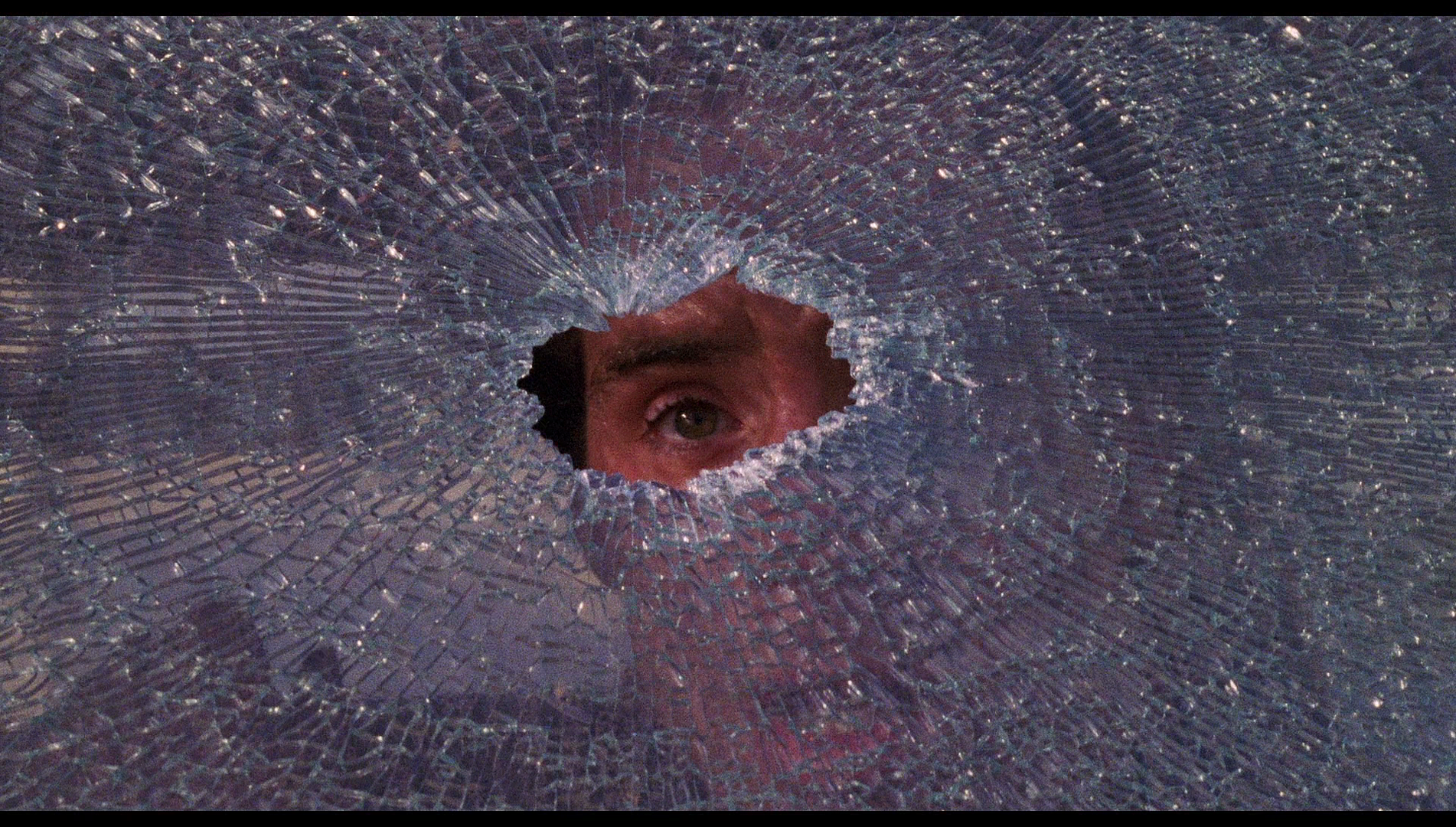 Through the film’s depiction of its protagonist, Chance, Seitz suggests that To Live and Die in L.A. satirises ‘the male narcissists’ of 1980s Hollywood cinema which had ‘supplanted’ the ‘rebel anti-heroes of the Johnson-through-Ford eras’ (Seitz, op cit.: 45). These ‘male narcissists’ (Sylvester Stallone, Arnold Schwarzenegger, Bruce Willis, Michael Douglas) ‘walked all over everybody yet still earned a slow cap at the end’ (ibid.). By contrast, in To Live and Die in L.A. Chance slowly draws ‘his more straitlaced partner […] deeper into his payback fantasy’ and in doing so ‘puts an ironic spin on the arguments that straightforward ‘80s heroes used to justify their quasi-fascist hijinks’ (ibid.: 46). Seitz highlights Chance’s line to Vukovich as emblematic of Chance’s attitudes throughout the film: ‘I’m gonna bag Masters, and I don’t give a shit how I do it’ (ibid.). When Judge Cedillo turns down Chance’s proposal that Cody be released in order to lead them to Masters, Chance reacts violently, his language becoming more than merely disrespectful: ‘If I was one of your asshole cronies, you’d be spread-eagled on your desk willing to do this for me’, Chance spits angrily. Shortly afterwards, Chance proposes to Vukovich the robbery of the Asian American criminal (who is later revealed to be an undercover FBI agent) that will enable them to buy Masters’ ‘paper’. ‘So you want to commit a robbery?’, Vukovich asks in disbelief. ‘I wouldn’t call it that’, Chance says. ‘What then?’, Vukovich asks. ‘Taking down a douchebag who’s trying to break the law’, Chance responds. ‘Why don’t you go over to his house and blow his fucking brains out?’, Vukovich asks, ‘That’s what you want to do anyway, right?’ The audience, at this point in the film, might very well be wondering the same thing. When Chance tells Ruth his plan to rob the out of town fence, she asks him, ‘You gonna bag him? [….] How you gonna do that if he’s carrying real cash and hasn’t committed a crime?’ ‘I can do whatever I want’, Chance tells her simply. Through the film’s depiction of its protagonist, Chance, Seitz suggests that To Live and Die in L.A. satirises ‘the male narcissists’ of 1980s Hollywood cinema which had ‘supplanted’ the ‘rebel anti-heroes of the Johnson-through-Ford eras’ (Seitz, op cit.: 45). These ‘male narcissists’ (Sylvester Stallone, Arnold Schwarzenegger, Bruce Willis, Michael Douglas) ‘walked all over everybody yet still earned a slow cap at the end’ (ibid.). By contrast, in To Live and Die in L.A. Chance slowly draws ‘his more straitlaced partner […] deeper into his payback fantasy’ and in doing so ‘puts an ironic spin on the arguments that straightforward ‘80s heroes used to justify their quasi-fascist hijinks’ (ibid.: 46). Seitz highlights Chance’s line to Vukovich as emblematic of Chance’s attitudes throughout the film: ‘I’m gonna bag Masters, and I don’t give a shit how I do it’ (ibid.). When Judge Cedillo turns down Chance’s proposal that Cody be released in order to lead them to Masters, Chance reacts violently, his language becoming more than merely disrespectful: ‘If I was one of your asshole cronies, you’d be spread-eagled on your desk willing to do this for me’, Chance spits angrily. Shortly afterwards, Chance proposes to Vukovich the robbery of the Asian American criminal (who is later revealed to be an undercover FBI agent) that will enable them to buy Masters’ ‘paper’. ‘So you want to commit a robbery?’, Vukovich asks in disbelief. ‘I wouldn’t call it that’, Chance says. ‘What then?’, Vukovich asks. ‘Taking down a douchebag who’s trying to break the law’, Chance responds. ‘Why don’t you go over to his house and blow his fucking brains out?’, Vukovich asks, ‘That’s what you want to do anyway, right?’ The audience, at this point in the film, might very well be wondering the same thing. When Chance tells Ruth his plan to rob the out of town fence, she asks him, ‘You gonna bag him? [….] How you gonna do that if he’s carrying real cash and hasn’t committed a crime?’ ‘I can do whatever I want’, Chance tells her simply.
To Live and Die in L.A. offers a ‘crucial difference’ to many action pictures of the 1980s: ‘not for a moment does Friedkin’s film encourage us to believe that Chance represents anyone’s interests but his own’ (ibid.). The opening sequence highlights Jim and Chance working together to defeat the Islamist terrorist, suggesting that as a team they are capable and competent, but much of the film that follows undermines this sense of the protagonists’ competence. Investigating Masters alone, Jim unwisely believes an isolated building is ‘clear’ but is ambushed by Masters and his shotgun-wielding henchman. Later, Vukovich also investigates a location where Masters may be hiding – but luckily, he isn’t. When Chance and Vukovich stakeout the home of Masters’ associated Max Waxman, against whom Masters seeks revenge for stealing some of his ‘paper’, they are oblivious to Masters’ intrusion into Waxman’s home via a back door – and the murder of Waxman that follows – until it is too late. The agents’ most incompetent moment comes when Vukovich agrees to Chance’s plan to steal $50,000 from an underworld figure, abducting a man whom the pair do not realise is an undercover FBI agent – and ultimately, facilitating this man’s death. The film, Seitz argues, ‘is attuned to the decade’s Me First culture, and it’s borderline nihilistic in a way that’s true to its gutter milieu and the self-interested, often loathsome humanoids that scamper through it’ (ibid.). Seitz suggests that at the ‘heart’ of To Live and Die in L.A. is a ‘cautionary tale’ that focuses on ‘a man [Chance] who is denied instant gratification [for the death of his partner and friend] and then seeks it in his own way, destroying careers, property, and lives in the process’ (ibid.). 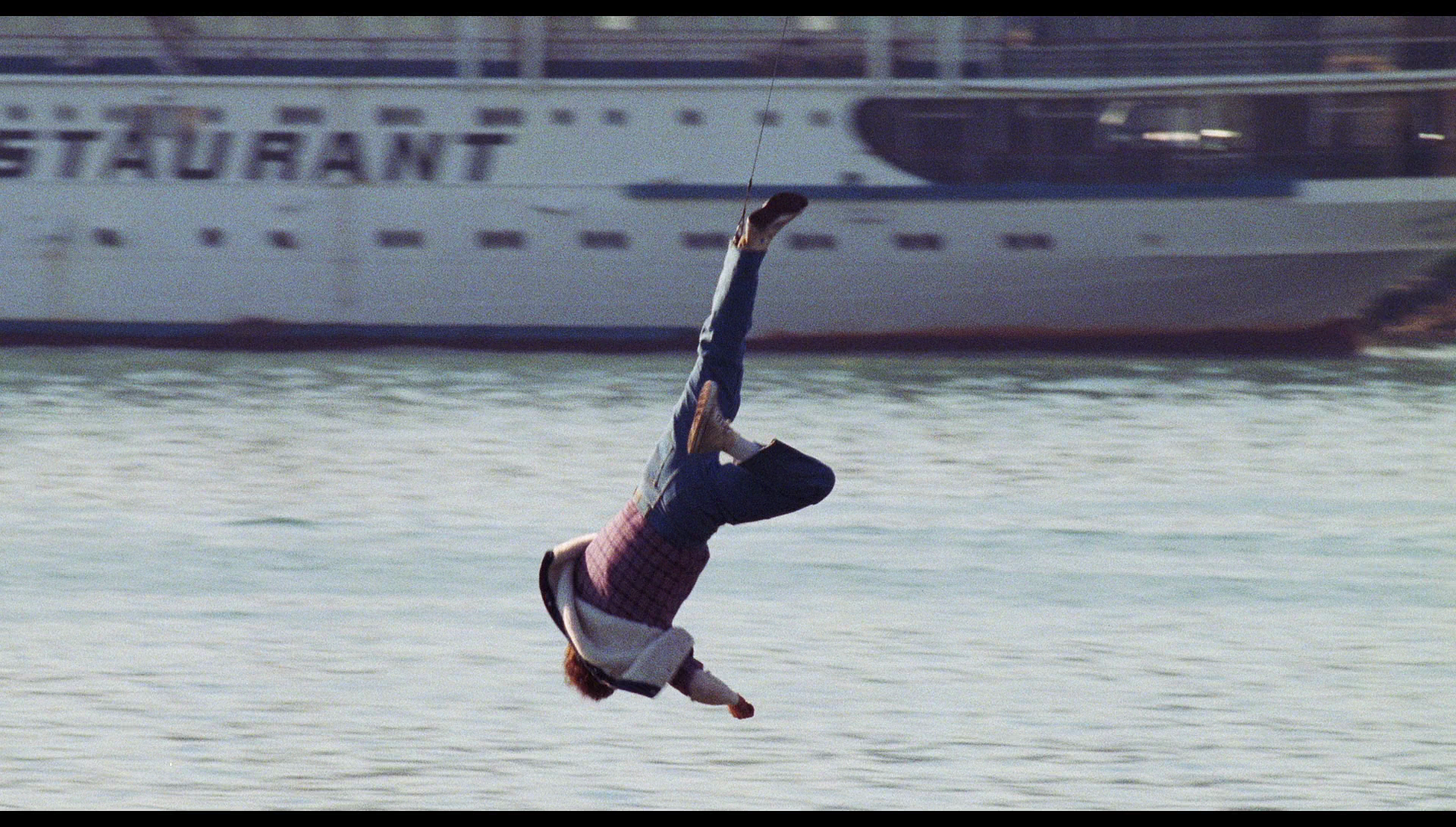 From the early sequences of the film, Chance’s risk-taking behaviour is depicted as inherently self-destructive. ‘I don’t think anyone has put me in harm’s way more than this hotshot over here’, Jim jokes at his retirement party, indicating towards Chance. Following the titles sequence, Chance is shown standing on a bridge, shifting his weight before side to side before leaping from it. Prefaced by Chance’s edgy body language, the moment is constructed to suggest Chance is making an attempt on his own life. However, it is soon revealed that the act is an exercise in base jumping, a hobby of Chance’s that emblematises his obsession with living close to ‘the edge’. (This thrill seeking behaviour would become a tenet of many of Petersen’s characters: for example, throughout CSI the audience was reminded of Petersen’s character’s obsession with rollercoasters.) The action (Chance jumping from the bridge) also echoes the death of the Islamist suicide bomber in the pre-credits sequence: the bomber is dragged by his heels from the top of the hotel, falling from the building with his suicide vest exploding in mid-air. Chance has a love of taking chances; the sledgehammer aptness of his name might remind viewers of the explanation given by Chance Boudreaux (Jean-Claude Van Damme), in John Woo’s later Hard Target (1993), when asked why he was named ‘Chance’ (‘Because my momma took one’). Given Chance’s risk-taking behaviour, his ultimate fate within the narrative is – though shocking to some first-time viewers – utterly appropriate and signposted throughout the film. From the early sequences of the film, Chance’s risk-taking behaviour is depicted as inherently self-destructive. ‘I don’t think anyone has put me in harm’s way more than this hotshot over here’, Jim jokes at his retirement party, indicating towards Chance. Following the titles sequence, Chance is shown standing on a bridge, shifting his weight before side to side before leaping from it. Prefaced by Chance’s edgy body language, the moment is constructed to suggest Chance is making an attempt on his own life. However, it is soon revealed that the act is an exercise in base jumping, a hobby of Chance’s that emblematises his obsession with living close to ‘the edge’. (This thrill seeking behaviour would become a tenet of many of Petersen’s characters: for example, throughout CSI the audience was reminded of Petersen’s character’s obsession with rollercoasters.) The action (Chance jumping from the bridge) also echoes the death of the Islamist suicide bomber in the pre-credits sequence: the bomber is dragged by his heels from the top of the hotel, falling from the building with his suicide vest exploding in mid-air. Chance has a love of taking chances; the sledgehammer aptness of his name might remind viewers of the explanation given by Chance Boudreaux (Jean-Claude Van Damme), in John Woo’s later Hard Target (1993), when asked why he was named ‘Chance’ (‘Because my momma took one’). Given Chance’s risk-taking behaviour, his ultimate fate within the narrative is – though shocking to some first-time viewers – utterly appropriate and signposted throughout the film.
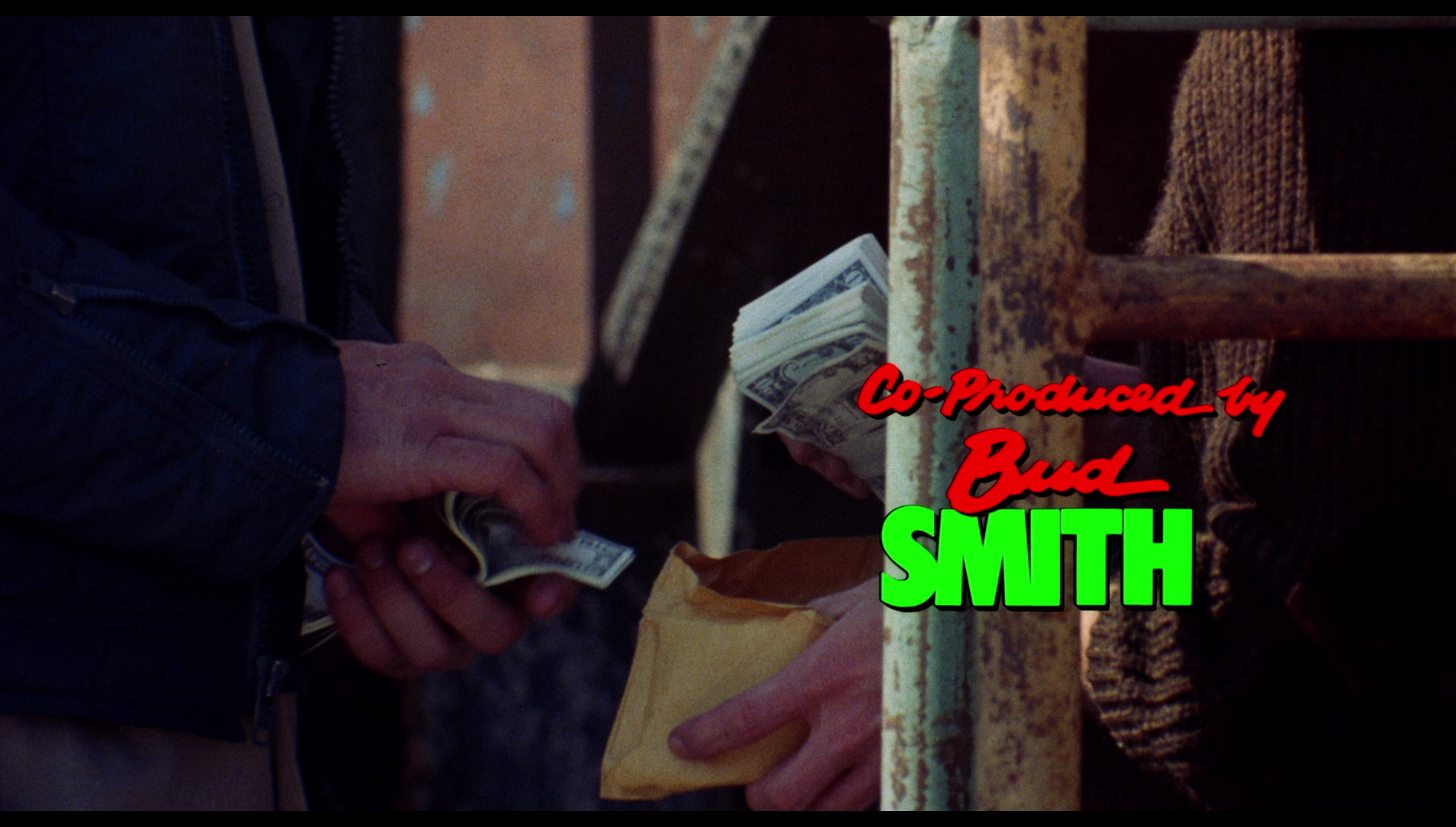 The film is driven by some impactful montages, including the titles sequence where the credits play under a montage of images of artworks which are intercut with shots of money exchanging hands on the city streets. Through the intercutting of these images, the sequence establishes a connection between art and money which runs throughout the film and is explored through Masters’ work as a counterfeiter. Early in the film, Masters is shown staring at one of his paintings, an impressionistic portrait in red. He has pinned the painting against the external wall of his workshop. He stares at the portrait, as if communicating with it, before setting it alight. As it burns, he continues to stare at it. Shortly afterwards, we are shown via a montage Masters’ dedication to the fine details of his work as a counterfeiter, the craft involved in this activity resembling that associated with fine art painting. The film is driven by some impactful montages, including the titles sequence where the credits play under a montage of images of artworks which are intercut with shots of money exchanging hands on the city streets. Through the intercutting of these images, the sequence establishes a connection between art and money which runs throughout the film and is explored through Masters’ work as a counterfeiter. Early in the film, Masters is shown staring at one of his paintings, an impressionistic portrait in red. He has pinned the painting against the external wall of his workshop. He stares at the portrait, as if communicating with it, before setting it alight. As it burns, he continues to stare at it. Shortly afterwards, we are shown via a montage Masters’ dedication to the fine details of his work as a counterfeiter, the craft involved in this activity resembling that associated with fine art painting.
The theme of counterfeiting runs throughout the film. Chance and Vukovich masquerade as buyers of Masters’ ‘paper’ in order to entrap the film’s chief antagonist. Meanwhile, Masters himself is a ‘counterfeit’ – a frustrated artist with a seemingly profound association with his work who moonlights as a counterfeiter. Relationships are equally ‘counterfeit’. Chance returns to Ruth’s place and the two make love before Friedkin reveals that Ruth is Chance’s informant – thus revealing Chance to be highly unethical in his approach to his police work. When, as Chance is getting dressed, Ruth asks Chance for the money she is owed for her work as his informant, he tells her coldly, ‘If you want bread, fuck a baker’. He then blackmails her into co-operating with him in his plan to snare Masters by promising that if she refuses, he will revoke her parole. Later, as Chance’s attempts to snare Masters escalates, Ruth expresses a generalised fear that she will be the target of reprisals. Buoyed by the excitement of getting close to Masters, Chance’s response is to athletically leap onto the sofa on which Ruth is sitting and pin her down, attempting to fuck her despite her protests. There is also the subtle suggestion that in order to get the information she provides Chance with, Ruth is encouraged by Chance to provide other men with sexual favours. (Chance’s sexual and personal exploitation of Ruth is the reason why Vukovich’s line at the end of the picture – ‘You work for me now’ – is so impactful.) 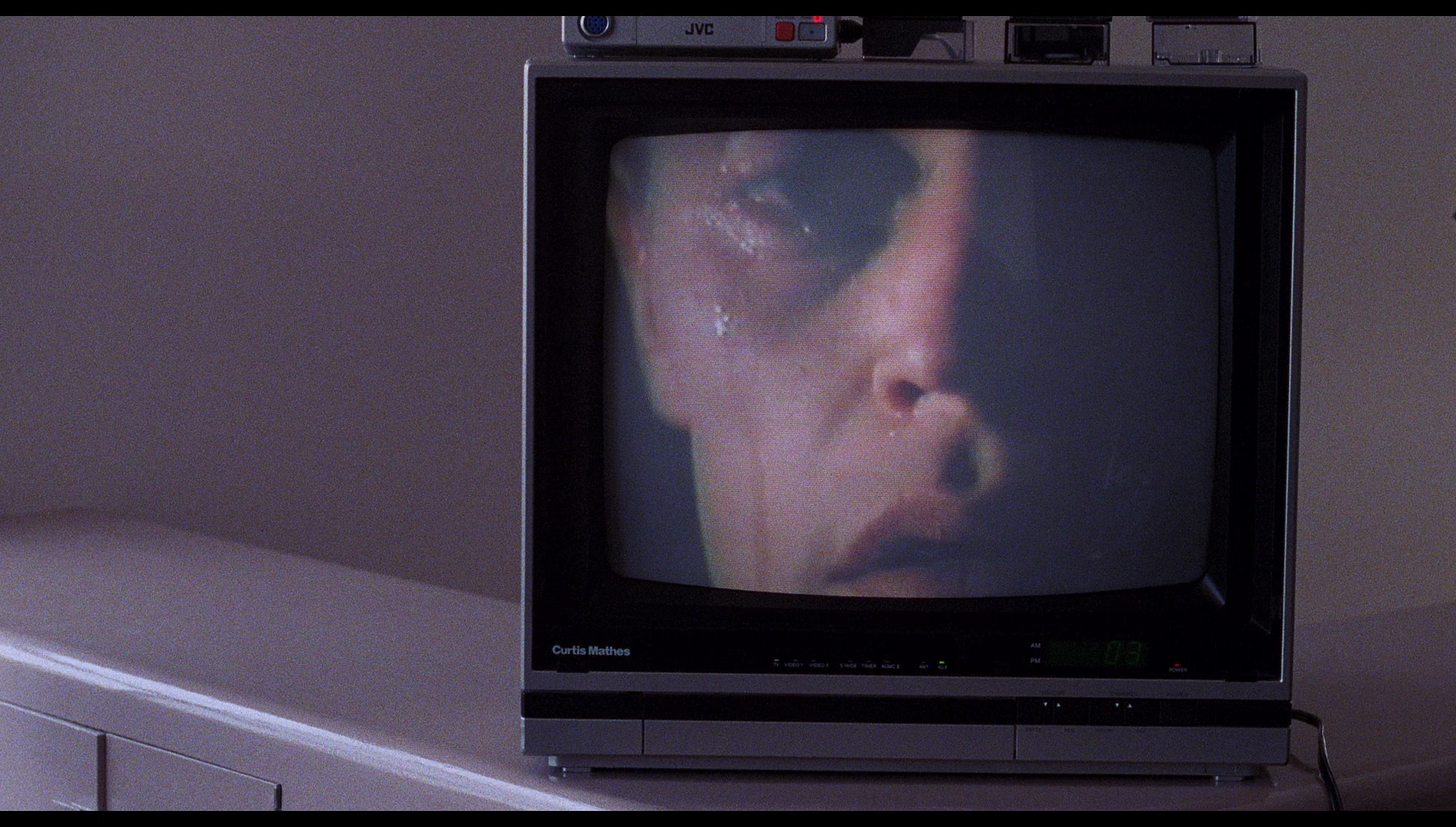 Meanwhile, Masters’ relationship with his girlfriend Bianca is represented in a similarly alienated fashion via the focus on both Masters and Bianca’s peccadilloes: Masters videotapes his sexual encounters with Bianca to play back later, suggesting the enacting of sexuality is a form of performance, and midway through the film he returns home with a dancer (played by former Hill’s Angel Jane Leeves) for Bianca to ‘play’ with. Edward Gallafent has suggested that, like Edgar Ulmer’s classic Poverty Row film noir Detour (1945), To Live and Die in L.A. ‘presents a world in which sexual activity takes place but is disconnected from any trace of mutual care or commitment […] and the only social occasion that we see is a group of cops drinking in a bar. It is a world where there are deaths but no funerals, as if a gathering together of family and friends is unimaginable’ (Gallafent, 2009: 81-2). Gallafent observes that at the end of the picture, Grimes asks Bianca why she stayed with Masters and ‘[s]he replies by asking him the same question, and leaves his reply, that it was just business, hanging in the air: sexual relations are not all that different from male/male business relations’ (ibid.: 86). Seitz compares Chance’s gradual lowering of Vukovich’s defences, to the point that the straitlaced Vukovich becomes a party to the kidnapping and murder of an undercover FBI agent, to the ‘high-school stud’ who takes ‘all night to unbutton his prom date’s gown’ (Seitz, op cit.: 47). Seitz says that ‘Chance uses his he-man flamboyance (hectoring righteousness, snotty asides, bow-legged gunfighter’s strut) as an intoxicant’, getting ‘Vukovich high on bad-boy swagger and loosen[ing] his standards one concession at a time’ (ibid.). This begins when Chance plays on the adherence Vukovich, who comes from a family of police officers, displays towards the ‘don’t rat on your partner’ ethos: when Vukovich questions Chance’s theft of the dealer’s notebook from Maxwell’s house, Chance responds by asking Vukovich ‘Does this mean you won’t carry your weight when shit goes down?’ Later, when Vukovich asks Chance why he doesn’t simply go over to Masters house ‘and blow his fucking brains out’, Chance responds by belittling Masters: ‘You ain’t my partner. You ain’t even my friend’, Chance says bitterly, ‘I tell you what, you’d better go into protection, ‘cause you ain’t shit on the street, you understand? You ain’t got the nuts!’ Meanwhile, Masters’ relationship with his girlfriend Bianca is represented in a similarly alienated fashion via the focus on both Masters and Bianca’s peccadilloes: Masters videotapes his sexual encounters with Bianca to play back later, suggesting the enacting of sexuality is a form of performance, and midway through the film he returns home with a dancer (played by former Hill’s Angel Jane Leeves) for Bianca to ‘play’ with. Edward Gallafent has suggested that, like Edgar Ulmer’s classic Poverty Row film noir Detour (1945), To Live and Die in L.A. ‘presents a world in which sexual activity takes place but is disconnected from any trace of mutual care or commitment […] and the only social occasion that we see is a group of cops drinking in a bar. It is a world where there are deaths but no funerals, as if a gathering together of family and friends is unimaginable’ (Gallafent, 2009: 81-2). Gallafent observes that at the end of the picture, Grimes asks Bianca why she stayed with Masters and ‘[s]he replies by asking him the same question, and leaves his reply, that it was just business, hanging in the air: sexual relations are not all that different from male/male business relations’ (ibid.: 86). Seitz compares Chance’s gradual lowering of Vukovich’s defences, to the point that the straitlaced Vukovich becomes a party to the kidnapping and murder of an undercover FBI agent, to the ‘high-school stud’ who takes ‘all night to unbutton his prom date’s gown’ (Seitz, op cit.: 47). Seitz says that ‘Chance uses his he-man flamboyance (hectoring righteousness, snotty asides, bow-legged gunfighter’s strut) as an intoxicant’, getting ‘Vukovich high on bad-boy swagger and loosen[ing] his standards one concession at a time’ (ibid.). This begins when Chance plays on the adherence Vukovich, who comes from a family of police officers, displays towards the ‘don’t rat on your partner’ ethos: when Vukovich questions Chance’s theft of the dealer’s notebook from Maxwell’s house, Chance responds by asking Vukovich ‘Does this mean you won’t carry your weight when shit goes down?’ Later, when Vukovich asks Chance why he doesn’t simply go over to Masters house ‘and blow his fucking brains out’, Chance responds by belittling Masters: ‘You ain’t my partner. You ain’t even my friend’, Chance says bitterly, ‘I tell you what, you’d better go into protection, ‘cause you ain’t shit on the street, you understand? You ain’t got the nuts!’
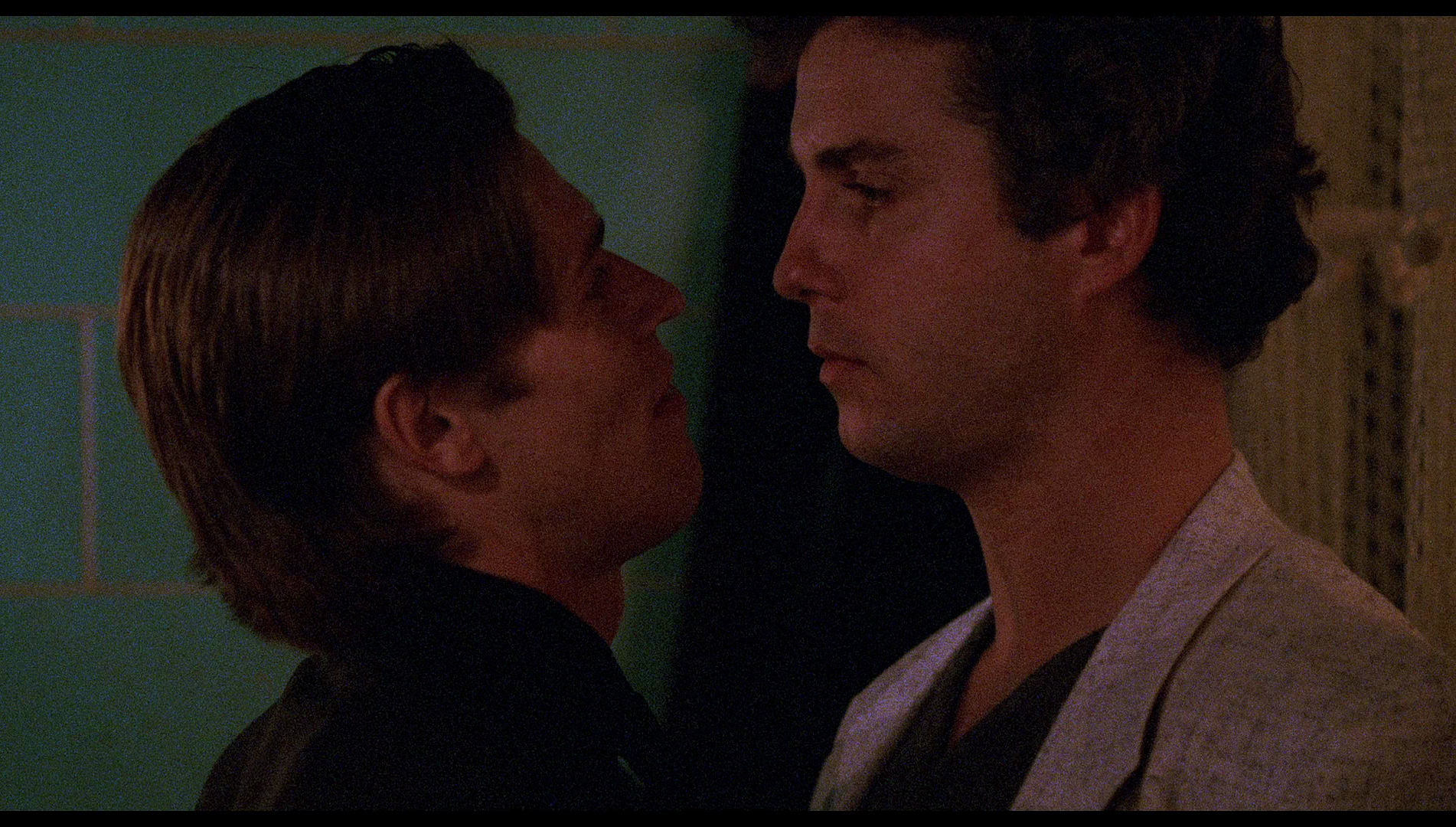 The comparisons the film draws between the ‘flirting’ that takes place between Chance and Masters, and the alienated sexual relationships these two men have with Ruth and Bianca respectively, is foregrounded in a number of scenes that suggest a level of homoeroticism within (and between) these two characters. When Grimes sets up a meeting between Masters and Chance and his partner, the trio get together in the locker room of the gym Masters frequents. They hold their introductory conversations whilst naked, their nudity contrasting with the masks they are wearing in their words to one another. In their ‘business’ meeting, with Chance undercover in his role as a buyer of Masters’ ‘paper’, Masters moves in on Chance to pat him down; in doing so, he moves in to Chance’s close personal space, their faces almost pressing against one another as if they might kiss. Chance, who we know is excited by risk and danger, looks mildly embarrassed as Masters’ asks ‘You’re not wired, are you? Is this my package?’ Masters then jokes ‘Like your work?’ before laughing heartily. The suggestion is clear: that in patting Chance down, Masters has discovered Chance’s erection (‘Is this my package?’) – an involuntary response to the danger of the situation. Here, Masters tells Chance, ‘You’re beautiful’ – a line Chance will repeat to Chance once the exchange has taken place. Much earlier in the film, when Masters visits Bianca at her theatre group’s studio, he waits in the dressing room for her; an androgynous figure (clearly played by a male actor) enters in heavy theatrical makeup. Chance moves in and kisses the man passionately. Then Friedkin cuts to a close-up of the figure as it removes the wig it is wearing, revealing itself to be a woman, Bianca. By the use of the male actor who kisses Dafoe, then the cutaway to Debra Feuer, Friedkin destablises the audience’s perspective on the action, pulling an almost Brechtian coup-de-théâtre. It’s an extraordinary, subtle moment in a film that, like many of Friedkin’s films, seems intent on exercising acts of defamiliarisation, which for some viewers is abrasive as Friedkin himself is said to be when on set. The comparisons the film draws between the ‘flirting’ that takes place between Chance and Masters, and the alienated sexual relationships these two men have with Ruth and Bianca respectively, is foregrounded in a number of scenes that suggest a level of homoeroticism within (and between) these two characters. When Grimes sets up a meeting between Masters and Chance and his partner, the trio get together in the locker room of the gym Masters frequents. They hold their introductory conversations whilst naked, their nudity contrasting with the masks they are wearing in their words to one another. In their ‘business’ meeting, with Chance undercover in his role as a buyer of Masters’ ‘paper’, Masters moves in on Chance to pat him down; in doing so, he moves in to Chance’s close personal space, their faces almost pressing against one another as if they might kiss. Chance, who we know is excited by risk and danger, looks mildly embarrassed as Masters’ asks ‘You’re not wired, are you? Is this my package?’ Masters then jokes ‘Like your work?’ before laughing heartily. The suggestion is clear: that in patting Chance down, Masters has discovered Chance’s erection (‘Is this my package?’) – an involuntary response to the danger of the situation. Here, Masters tells Chance, ‘You’re beautiful’ – a line Chance will repeat to Chance once the exchange has taken place. Much earlier in the film, when Masters visits Bianca at her theatre group’s studio, he waits in the dressing room for her; an androgynous figure (clearly played by a male actor) enters in heavy theatrical makeup. Chance moves in and kisses the man passionately. Then Friedkin cuts to a close-up of the figure as it removes the wig it is wearing, revealing itself to be a woman, Bianca. By the use of the male actor who kisses Dafoe, then the cutaway to Debra Feuer, Friedkin destablises the audience’s perspective on the action, pulling an almost Brechtian coup-de-théâtre. It’s an extraordinary, subtle moment in a film that, like many of Friedkin’s films, seems intent on exercising acts of defamiliarisation, which for some viewers is abrasive as Friedkin himself is said to be when on set.
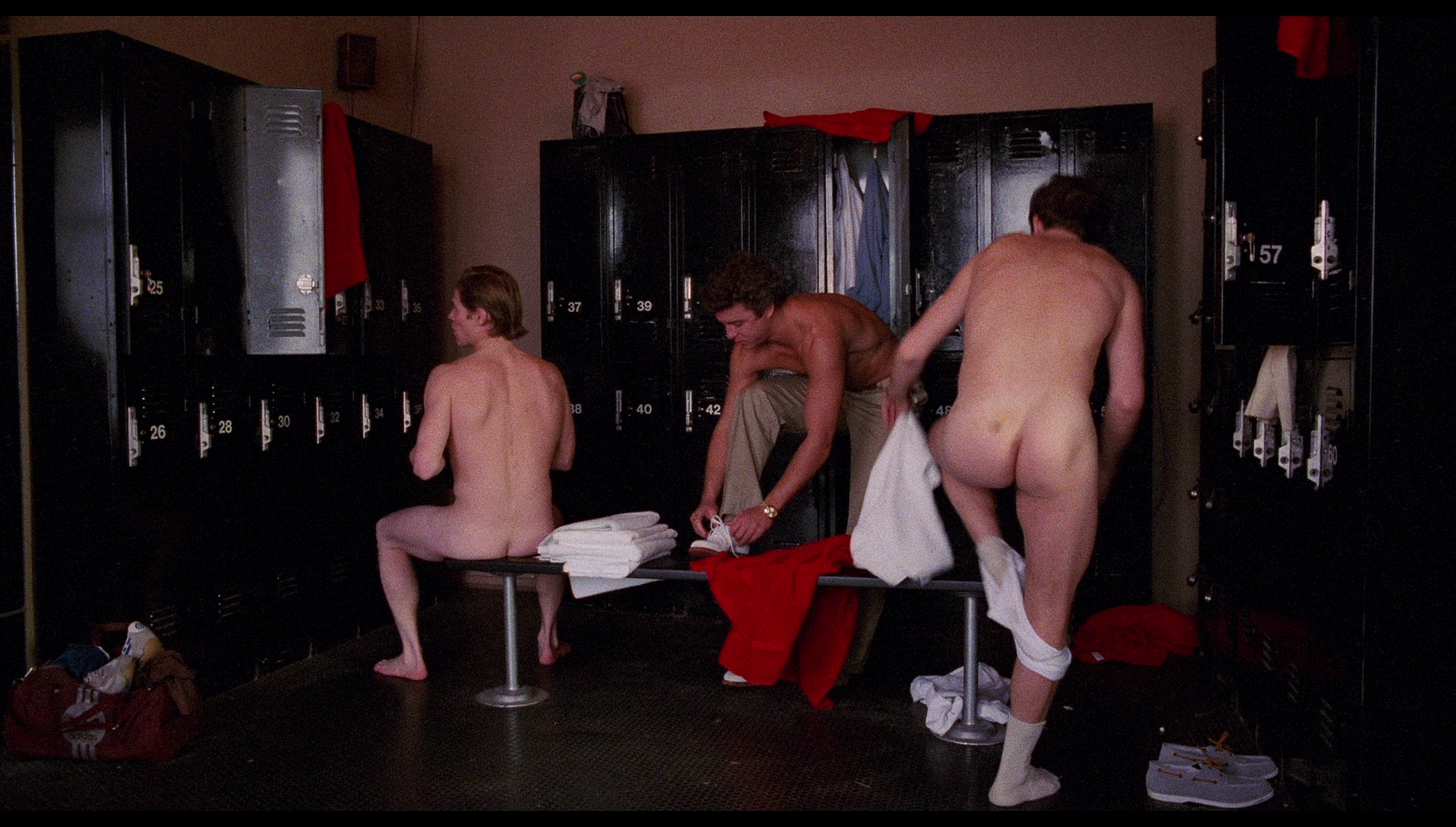 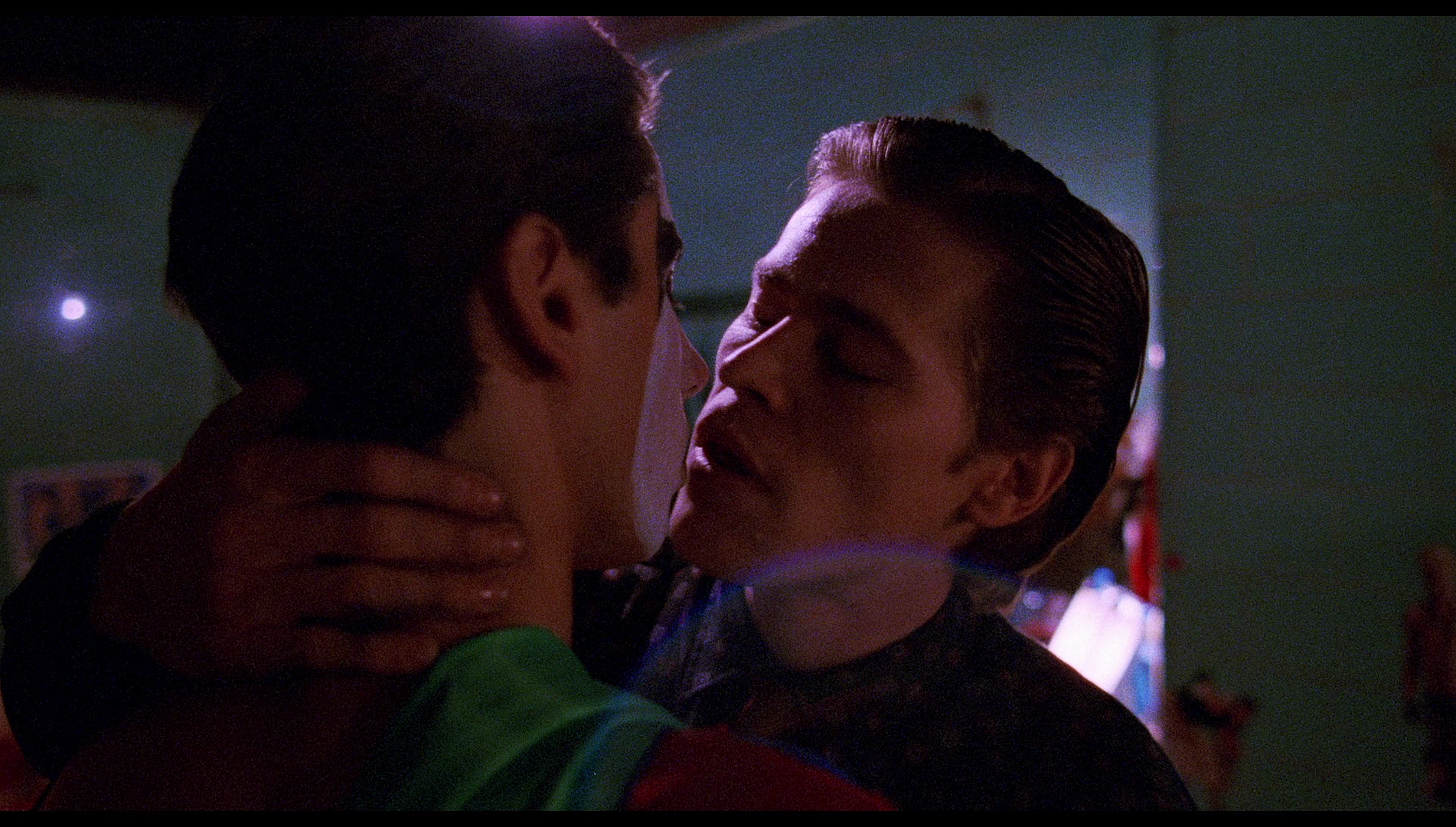 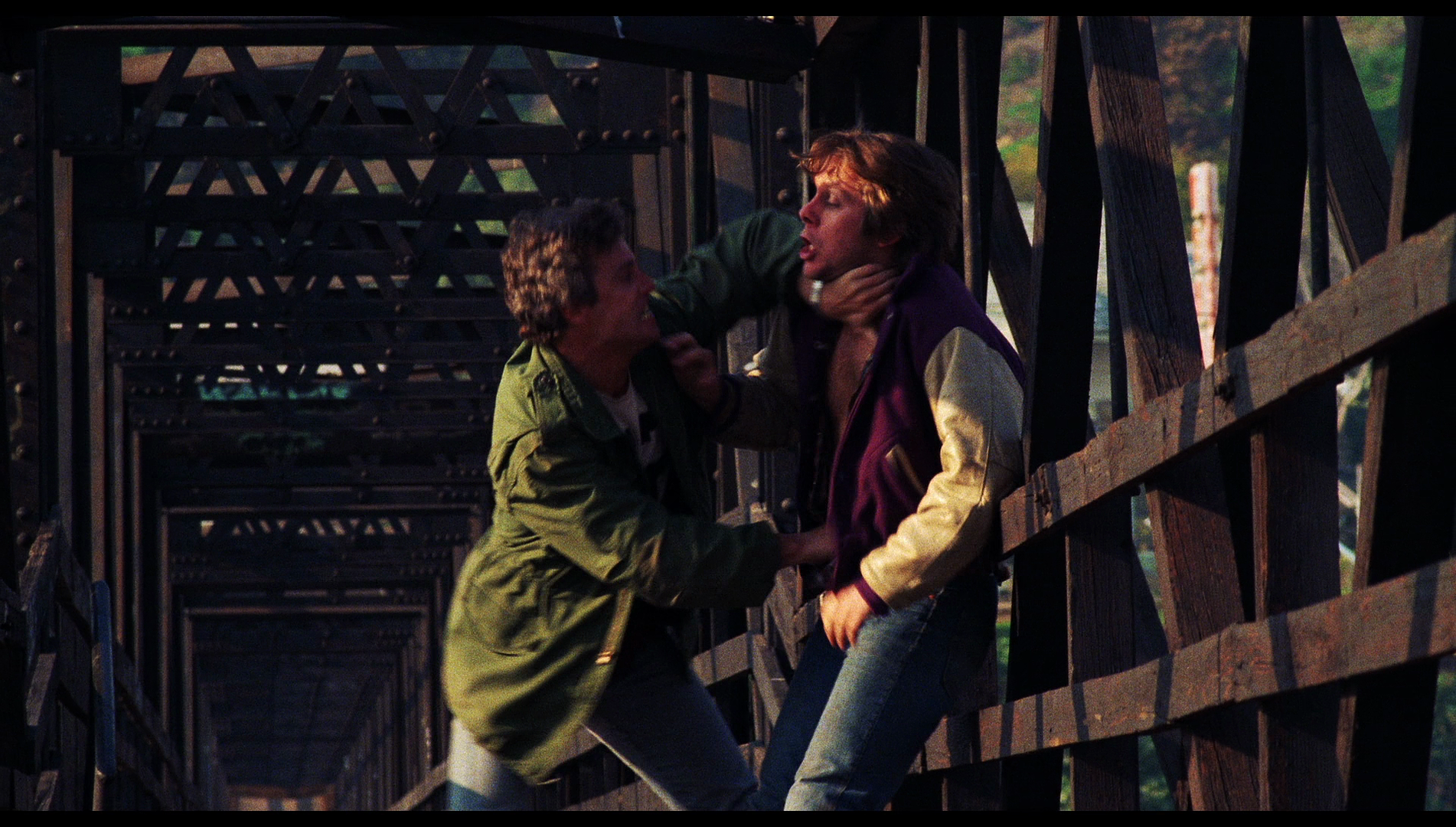
Video
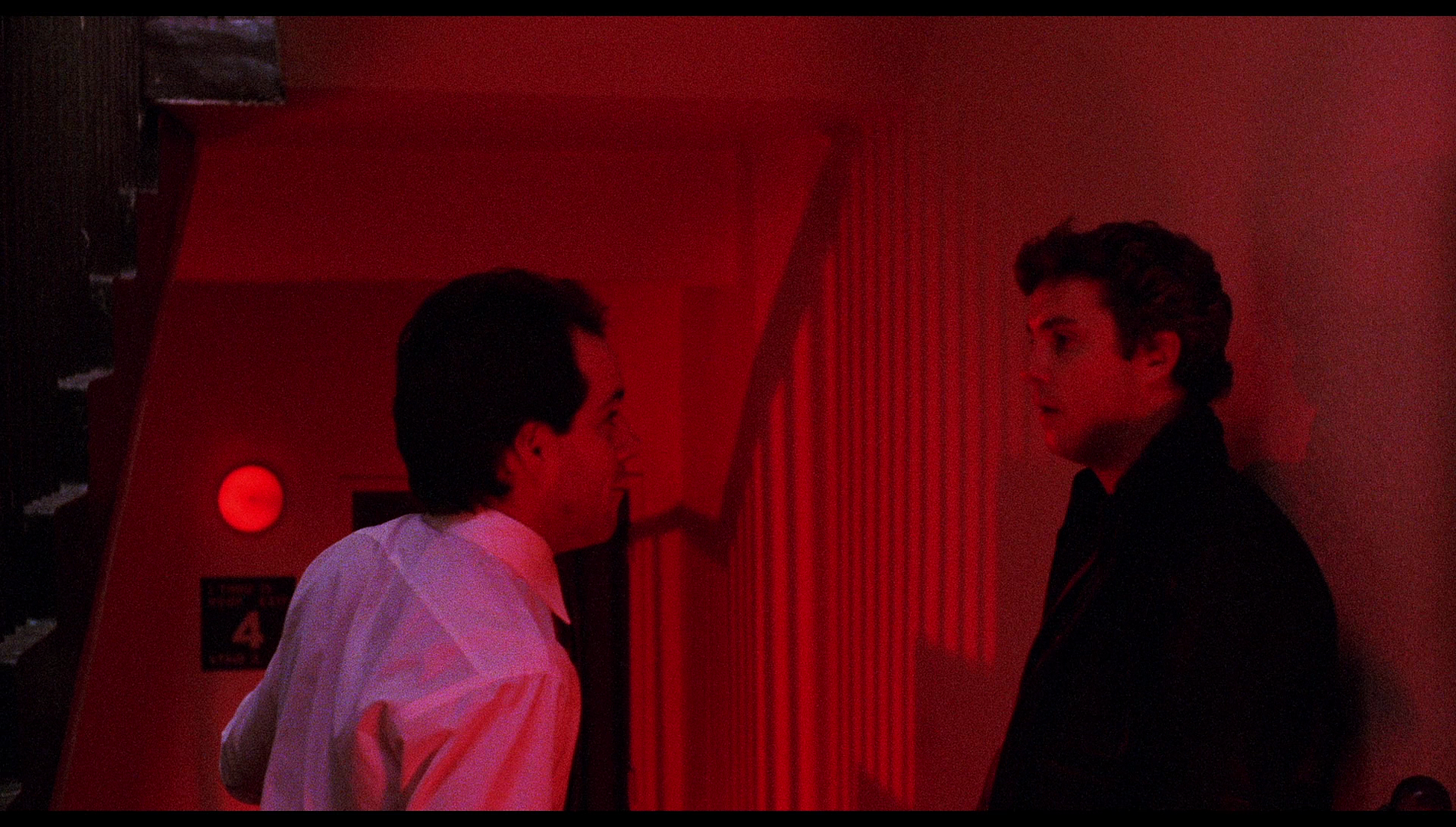 The film is presented here uncut, and with a running time of 115:41 mins. The presentation takes up approximately 34Gb of space on a dual-layered Blu-ray disc and uses the AVC codec. The aspect ratio of this presentation is the intended aspect ratio of 1.85:1. This presentation is based on a new 4k restoration of the film, taken from the original negative. Colour grading was supervised by Friedkin himself. The film is presented here uncut, and with a running time of 115:41 mins. The presentation takes up approximately 34Gb of space on a dual-layered Blu-ray disc and uses the AVC codec. The aspect ratio of this presentation is the intended aspect ratio of 1.85:1. This presentation is based on a new 4k restoration of the film, taken from the original negative. Colour grading was supervised by Friedkin himself.
The film’s cinematography, by Robbie Muller, is frequently breathtaking. The use of ‘hot’ colours (reds, oranges), bathing the mise-en-scène – including the faces of the characters – suggests an omnipresent, unbearable heat. In some scenes, the use of lurid, synthetic/artificial colours (acrylic greens, bright reds) seems to highlight the artificiality of the relationships within the film. There is an urgency to the aesthetic of the film, amplified by the use of real locations and the workarounds within the photography that such a heavy emphasis on location shooting necessitates, that works very well with the narrative, complementing it. Most of the film seems to have been shot in fairly standard focal lengths, with the effect that interiors feel especially cramped and claustrophobic – including the tight close-ups used in the car chase sequence, bringing us in to the sense of panic on Vukovich’s face and the grim determination and watchfulness of Chance’s fixed facial expression. The ‘sharp’ aesthetic was created via Muller’s use of precise Zeiss and Cook lenses, known for their almost surgical qualities. The presentation of the film on this Blu-ray disc is very good. Fine detail is evident throughout, and contrast levels are very pleasing: for example, the opening pursuit by Chance and Jim of the Islamist terrorist through the hotel at nighttime has depth to the shadows and a gradation within them to the deepest black. Meanwhile, midtones are very strong and detailed. Colour reproduction is striking, emphasising the ‘hot’ colours within the original photography – especially the vivid reds, emphasised in a number of scenes via the use of red coloured lights (the red cast across the face of the terrorist in the opening sequence; the red light of Masters’ dark room). This new presentation features a noticeable push towards reds than the previously available Blu-ray release from Fox. (Some screen grabs comparing the two releases are included below, at the bottom of this review.) Skin tones sometimes look a little ‘hot’, but again this seems to be a product of the original photography. The presentation retains the structure of 35mm film, which is carried over on to the disc via a strong encode.
Audio
The disc provides the viewer with the option of watching the film with a newer DTS-HD MA 5.1 (re)mix or a LPCM 2.0 stereo track. Both are clean and clear with very strong range, but for a purist the latter option seems preferable: the LPCM 2.0 track is rich, with good sound separation (especially in Wang Chung’s score) and has more depth than the DTS-HD 5.1 remix – which feels a little ‘hollow’ in comparison. Optional English subtitles for the Hard of Hearing are provided. These are easy to read and free from errors.
Extras
 The disc includes the following: The disc includes the following:
- An audio commentary with William Friedkin. This is the same audio commentary recorded for the film’s DVD release from MGM. It’s an interesting track, focusing on Friedkin’s recollections of the project and its origins. Friedkin doesn’t comment on the onscreen action, instead reflecting on what appealed to him about the project and how it was put together. - ‘Taking a Chance’ (20:41). William Petersen is interviewed about the film. He says that he was cast in the film following a theatre performance as Stanley Kowalski in A Streetcar Named Desire. (In retrospect, it’s easy to see a lot of Kowalski in Petersen’s performance as Chance.) Friedkin cast the film with ‘no names’ in an attempt to ‘mimic what he’d done with The French Connection’ and therefore chose ‘unknown actors, in film’. Gary Sinise was interviewed for the part, and Sinise pointed Friedkin in the direction of Petersen. Petersen was offered the part after reading a scene for Friedkin in his (Friedkin’s) living room. Petersen sought advice from his friend John Malkovich, who had ‘just made his first movie’, about how to make a deal for the picture. Then Petersen pointed Friedkin to John Pankow, who was cast in the role of Vukovich. - ‘Doctor for a Day’ (8:51). Dwier Brown speaks about his role in the film, as the doctor in the hospital scene in which Cody gives Chance the slip. Brown reflects on how he was cast in the film, stating that Friedkin asked him to improvise a scene – and Brown was ‘stoked’ about this, finding it ‘so much fun’. - ‘Renaissance Woman in L.A.’ (14:55). Debra Feuer reflects on her role as Bianca. She talks about the casting process. She describes the role as written in the script as a bisexual ‘mulatto’ (Feuer’s casual use of this term might cause the viewer to wince). She praises Friedkin’s casual approach to directing actors – which she says displayed ‘a sense of when you were being truthful and real or not, and that’s what he wanted in this film’. - ‘So in Phase: Scoring the Film’ (12:43). The members of Wang Chung discuss their score for the film, talking about how they came to be tasked with writing the music for To Live and Die in L.A. Friedkin used one of their songs, ‘Wait’, as a temp track whilst editing the film, and the band were asked to provide the score for the picture by Friedkin. - ‘Wrong Way: The Stunts’ (35:38). The film’s stunt co-ordinator, Buddy Joe Hooker, offers an indepth discussion of his work on the picture, discussing the responsibilities of his role generally before talking about To Live and Die in L.A. specifically. He suggests that many filmmakers ‘cut away too soon or leave it too long, and the action stuff doesn’t flow as well’ as it should do. Hooker talks at length about the car chase sequence, which was added at a late stage in the production. - ‘Counterfeit World: Making To Live and Die in L.A.’ (29:41). This archival featurette, assembled for the film’s DVD release from MGM in the early 2000s, sees input from Friedkin, Petersen, Dafoe, editor/co-producer Bud Smith and John Pankow. Friedkin says the film is about ‘counterfeit emotions, counterfeit money, counterfeit superstructure of the Secret Service. Everyone in the film has a counterfeit motive’, and the film is ultimately about ‘counterfeit emotions’. Friedkin discusses what appealed to him about the source novel, with the ‘surreal’ nature of the ‘Secret Service outside Washington’ offering ‘a kaleidoscope of various types of crime’. The interviewees’ comments are interspersed with behind-the-scenes footage from the production. - Alternate Ending (5:59), with Optional Introduction (2:19). In the optional introduction, editor Bud Smith, William Friedkin, John Pankow and William Petersen discuss the problems the studio had with the film’s original ending – and the alternate ending Friedkin shot to appease them, which features Chance and Vukovich ‘just hanging’ (in Pankow’s words) at a remote Alaskan outpost to which they have been sent. This ending, Petersen says, is the ‘Eddie Murphy version’ of the film. The optional introduction is taken from the old MGM DVD release. - Deleted Scene (2:04), with Optional Introduction (1:51). Friedkin and Pankow introduce a deleted scene in which Vukovich attempts to reconnect with his estranged wife. Again, the optional introduction was recorded for the MGM DVD release from the early 2000s. - Stills and Photo Gallery (2:04). - Trailers (3:31). - Radio Spot (1:04). Also included in the release is one of Arrow’s characteristically excellent booklets. This one contains a new piece about the film by critic Anne Billson. Entitled ‘Kinetic Energy’, this article situates the film within Friedkin’s body of work and reflects on some of the production decisions. A 1985 article from American Cinematographer, ‘Louma Crane and William Friedkin’ by Ric Gentry, is reprinted here too, and examines the use of the Louma crane during the production of the film. The final piece in the booklet is another 1985 article from American Cinematographer, by the same author as the previous article (Ric Gentry), which is simply entitled ‘William Friedkin’. Here, Gentry transcribes an interview with Friedkin taken on the set of the film.
Overall
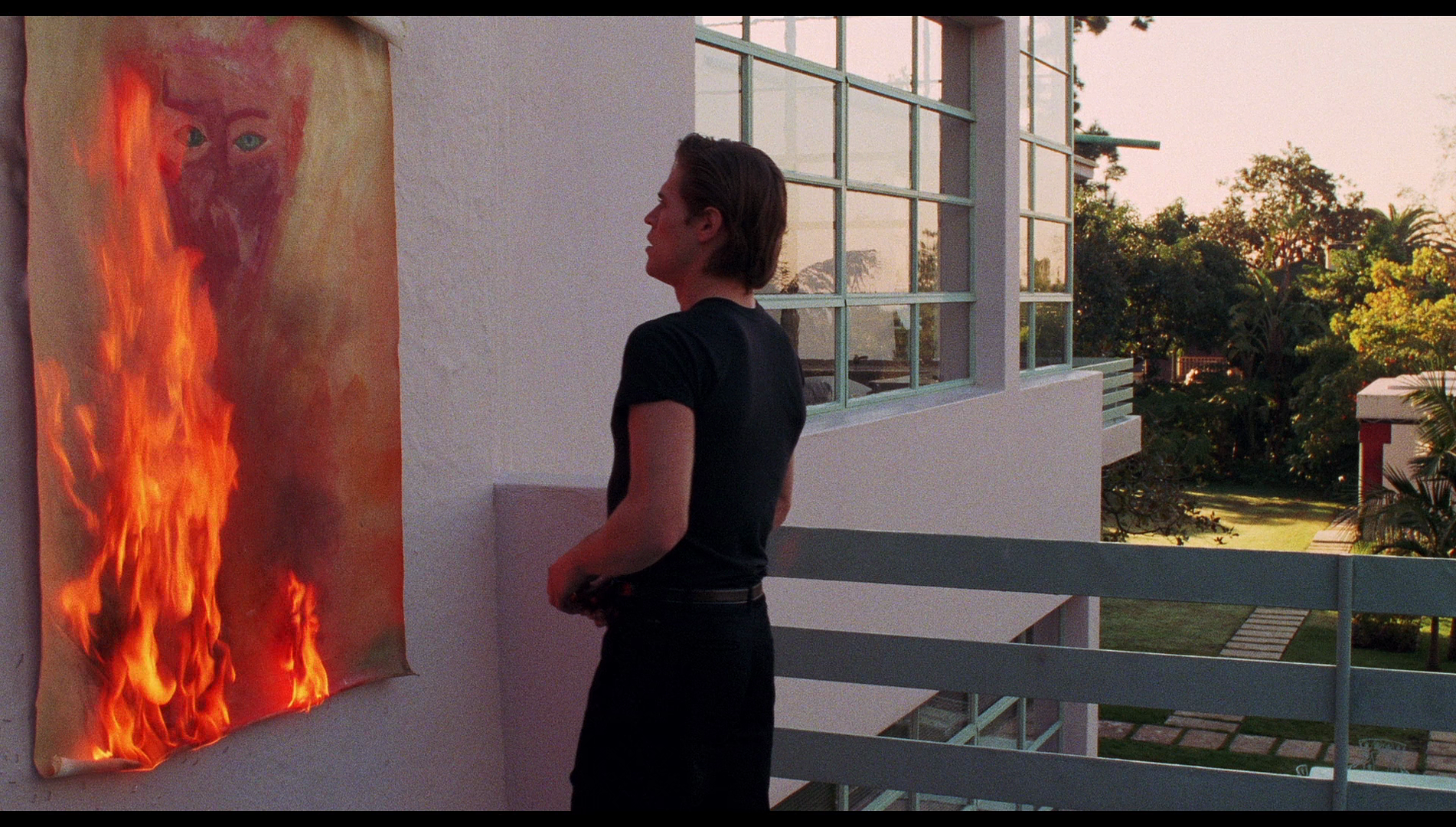 Even its most ardent fan (and I’d count To Live and Die in L.A. amongst my twenty-five or so favourite films of all time) will have to concede that Friedkin’s neo-noir picture is riddled with clichés: the cop who is killed just days before retirement (and who even utters that immortal line, ‘I’m getting too old for this shit!’); the cop who, addicted to risk (and aptly named ‘Chance’), skirts the thin line between the law and outlawry. But Friedkin works magic with these clichés, intercutting them with shots of the landscape and oftentimes almost subliminal edits that suggest mysterious happenings taking place beneath the façade of the narrative (and, for that matter, life). This sense of the esoteric and arcane – which is present throughout Friedkin’s work (and, frequently, manifests itself in his fascination with the subliminal edits) but is most foregrounded in The Exorcist (1973), with its theme of possession and Karras’ glimpses of the afterlife – is highlighted in To Live and Die in L.A. through Rick Masters’ work as an artist: fastidious in his art and his work as a counterfeiter, which is an extension of his art, Masters is introduced staring at an impressionistic portrait which he has pinned to a wall, as if waiting for it to communicate with him, before setting it alight. (The Wang Chung track playing under this moment is aptly titled ‘The Red Stare’ – the colour red is descriptive of the use of colour within the painted portrait, but also has connotations of the demonic.) Later, when he gains entry into Maxwell’s home after using Bianca as a lure, Masters picks up a statuette belonging to Maxwell and notes its vintage, establishing his comprehension of art history, before his language becomes more profane and threatening: ‘Eighteenth Century Cameroon, yes?’, Masters asks, ‘Your taste is in your ass’. Even its most ardent fan (and I’d count To Live and Die in L.A. amongst my twenty-five or so favourite films of all time) will have to concede that Friedkin’s neo-noir picture is riddled with clichés: the cop who is killed just days before retirement (and who even utters that immortal line, ‘I’m getting too old for this shit!’); the cop who, addicted to risk (and aptly named ‘Chance’), skirts the thin line between the law and outlawry. But Friedkin works magic with these clichés, intercutting them with shots of the landscape and oftentimes almost subliminal edits that suggest mysterious happenings taking place beneath the façade of the narrative (and, for that matter, life). This sense of the esoteric and arcane – which is present throughout Friedkin’s work (and, frequently, manifests itself in his fascination with the subliminal edits) but is most foregrounded in The Exorcist (1973), with its theme of possession and Karras’ glimpses of the afterlife – is highlighted in To Live and Die in L.A. through Rick Masters’ work as an artist: fastidious in his art and his work as a counterfeiter, which is an extension of his art, Masters is introduced staring at an impressionistic portrait which he has pinned to a wall, as if waiting for it to communicate with him, before setting it alight. (The Wang Chung track playing under this moment is aptly titled ‘The Red Stare’ – the colour red is descriptive of the use of colour within the painted portrait, but also has connotations of the demonic.) Later, when he gains entry into Maxwell’s home after using Bianca as a lure, Masters picks up a statuette belonging to Maxwell and notes its vintage, establishing his comprehension of art history, before his language becomes more profane and threatening: ‘Eighteenth Century Cameroon, yes?’, Masters asks, ‘Your taste is in your ass’.
The relationship between ‘art’ and ‘monster’ connects the film to pictures such as Roger Corman’s A Bucket of Blood (1959), H G Lewis’ Color Me Blood Red (1965) and Blood Bath (Novakovic/Hill/Rothman, 1966) – the last two of which have, by coincidence, been released on Blu-ray by Arrow this year, the former as part of Arrow’s H G Lewis ‘Feast’ boxed set, and the latter on its own in a packed release (reviewed by us here). Masters’ final moments are more befitting a monster in a horror film than a character in a thriller. The sense of the arcane is pushed to the fore right at the end of the picture, when Vukovich seemingly assimilates Chance’s character (and his fashion sense – all cowboy boots, jeans and swagger) and tells Ruth, quite simply, ‘You work for me now’ – much like at the end of The Exorcist, Karras demands the demon Pazuzu to ‘Come into me’, allowing the beast to take control of his body before hurling himself through the window to destroy it. The Wang Chung score is often cited as dated, though like Chance racing his car the wrong way down a motorway, the music drives the film along at a fair old clip, and in toto To Live and Die in L.A. is a film driven by an almost unstoppable sense of momentum – as if the world depicted within the narrative is driving towards an inevitable collision with what Masters represents (the criminal, the artistic, and possibly even the demonic). Arrow’s Blu-ray presentation of To Live and Die in L.A. contains a tip-top new home video presentation of the film, noticeably more ‘hot’ in colour than the previously available Blu-ray but in a manner that works with the material and feels organic within it (communicating the sense of the infernal that runs throughout the film, bleeding into its climax in a direct manner), and is supported by some amazing contextual material – both that created for and previously available on the MGM DVD release of the early 2000s and some new interviews that provide a strong sense of context for the film. The new interview with Petersen is particularly good. This release comes with a very strong recommendation. References: Denby, David, 1986: ‘Back from the Future’. In: New York Magazine (8 December, 1986): 106-8 Gallafent, Edward, 2009: ‘Worlds Without Consequence: Two Versions of Film Noir in the 1980s’. In: Bould, Mark et al (eds), 2009: Neo-Noir. New York: Wallflower Press: 75-89 Haut, Woody, 2002: Heartbreak and Vine: The Fate of Hardboiled Writers in Hollywood. London: Serpent’s Tail Seitz, Matt Zoller, 2008: ‘To Live and Die in L.A.’. In: Sterritt, David & Anderson, John C (eds), 2008: The B List: The National Society of Film Critics on the Low-Budget Beauties. Philadelphia: Da Capo Press: 45-8 SCREEN GRABS COMPARING ARROW’S NEW BLU-RAY PRESENTATION WITH THE PREVIOUSLY-AVAILABLE BLU-RAY FROM FOX. ARROW: 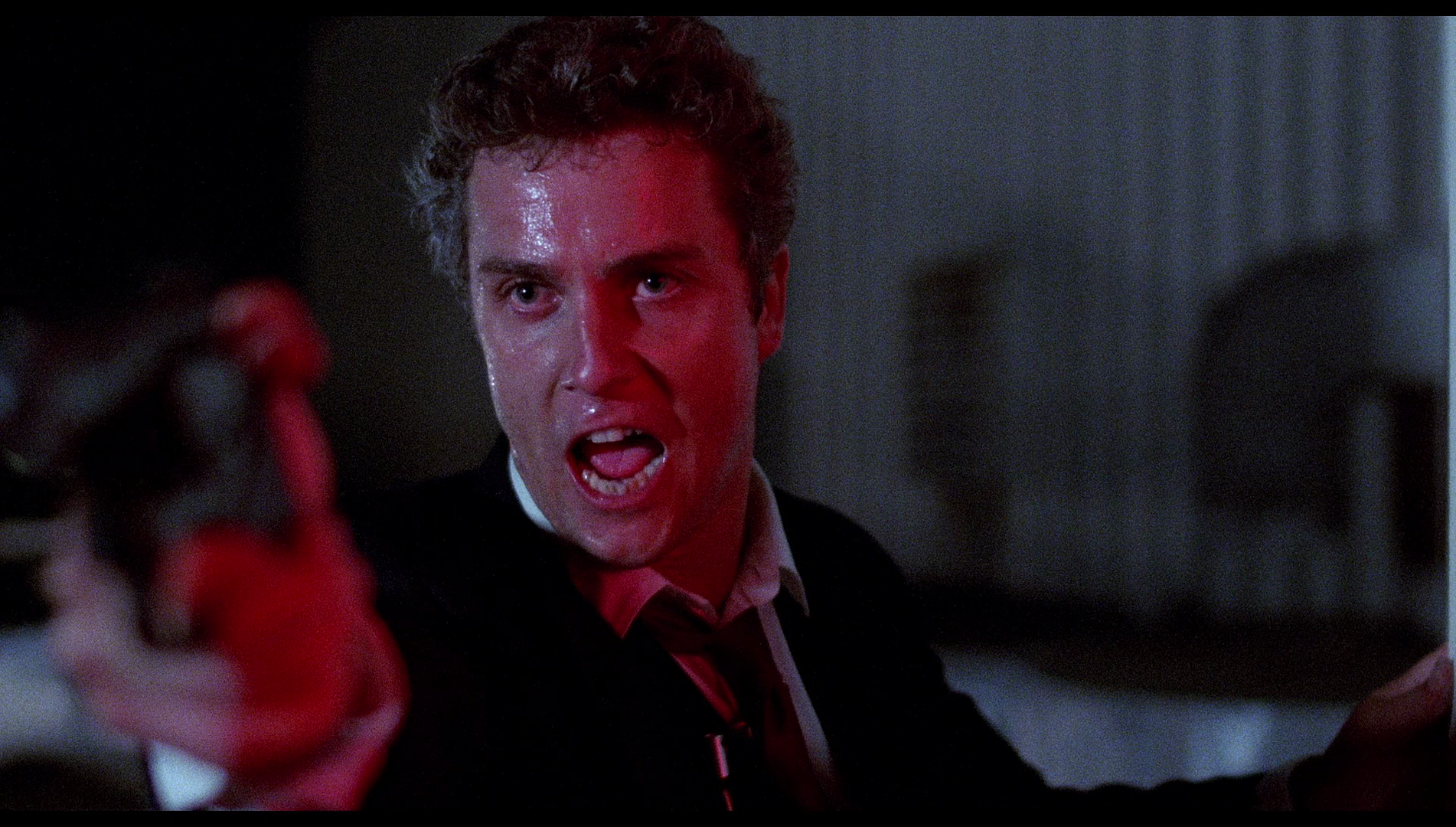
FOX: 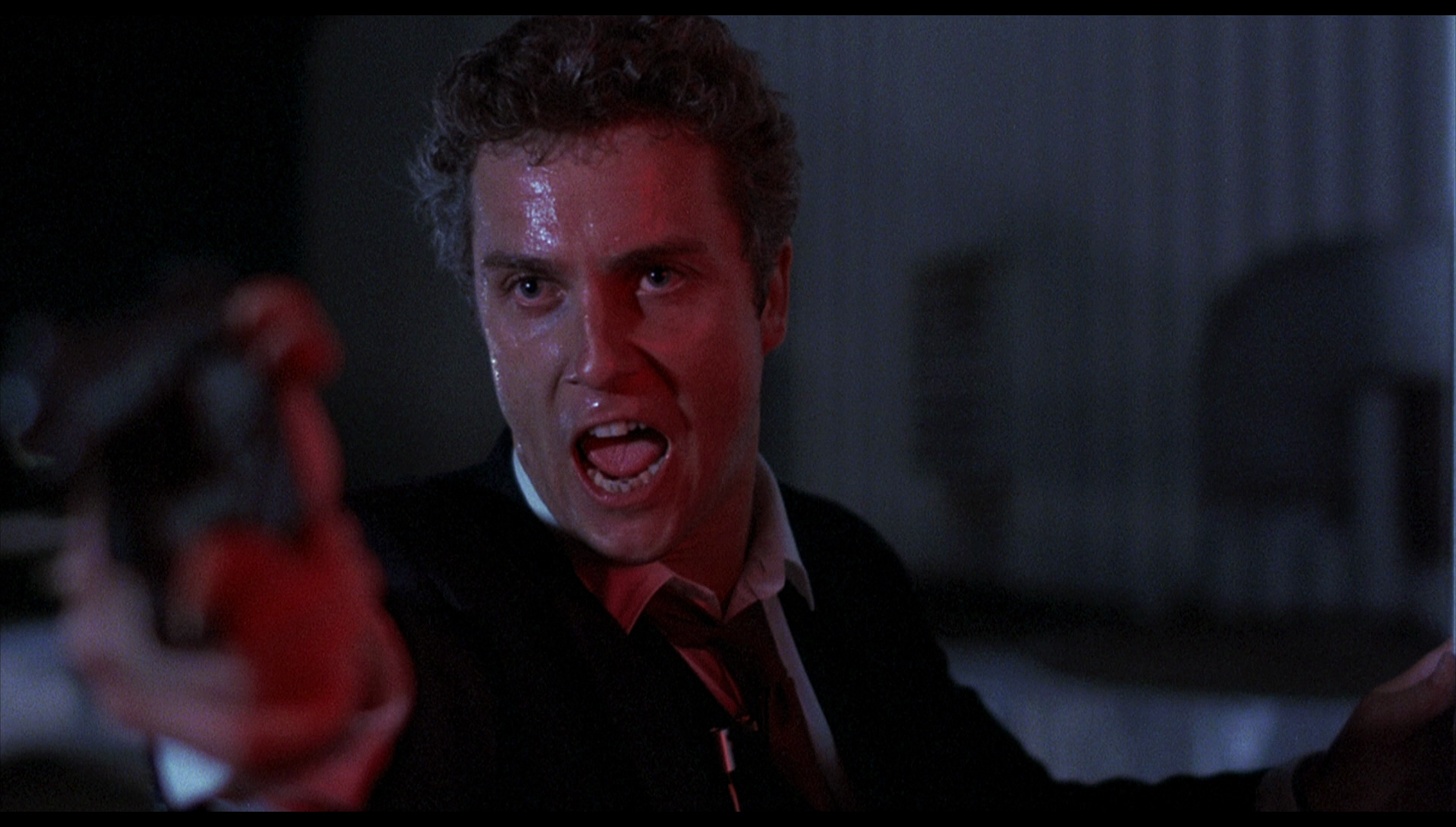
ARROW: 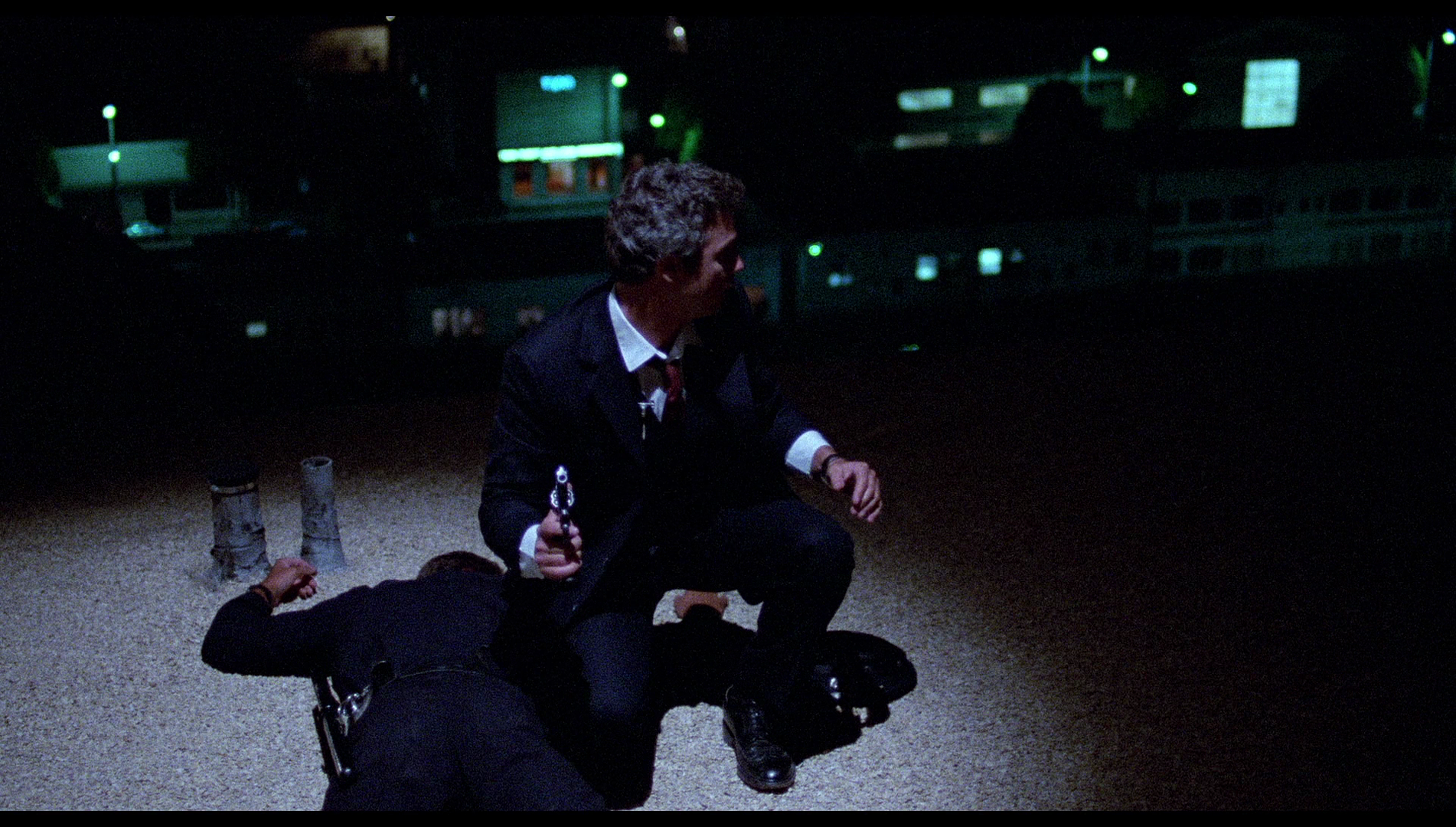
FOX: 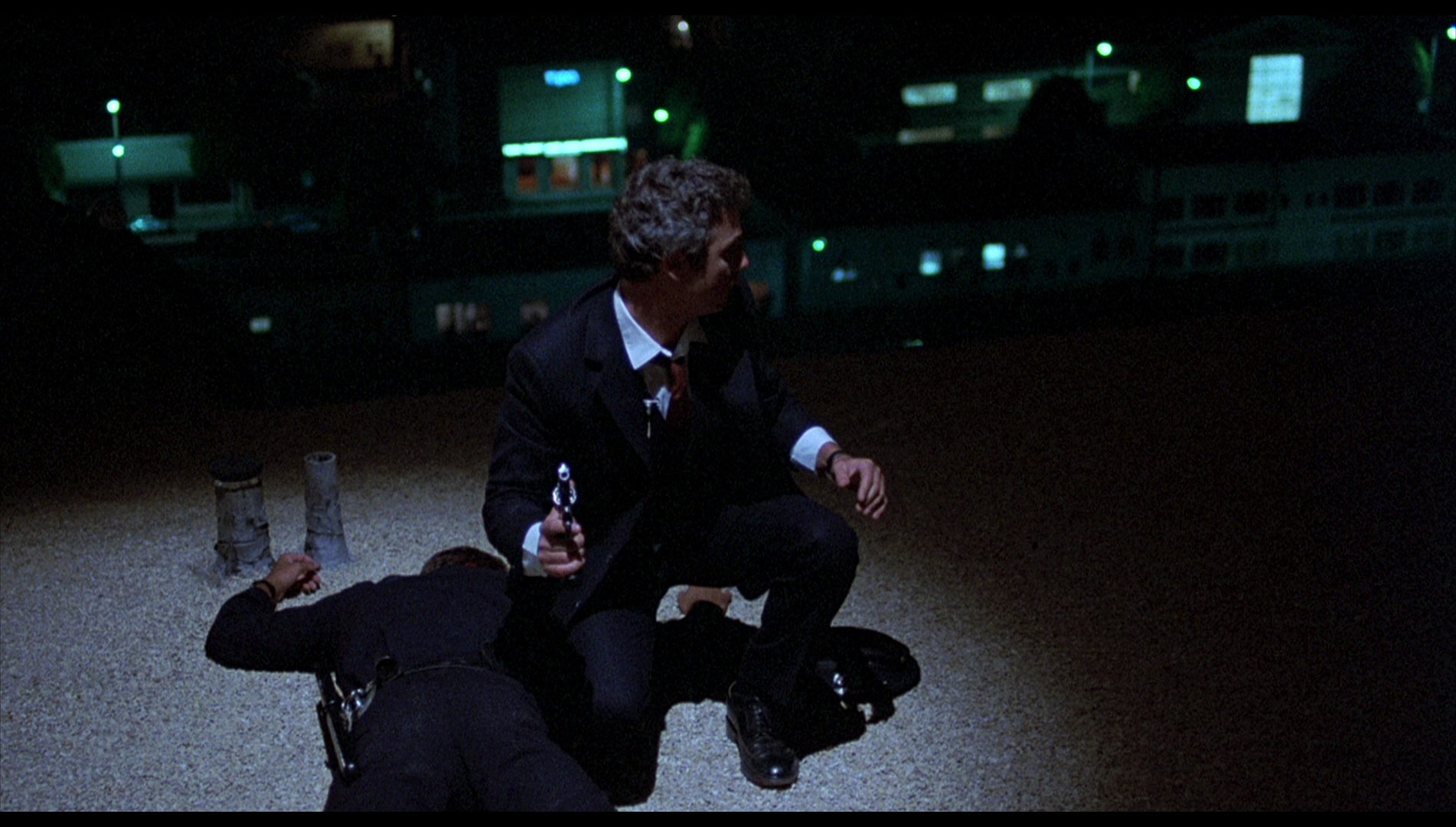
ARROW: 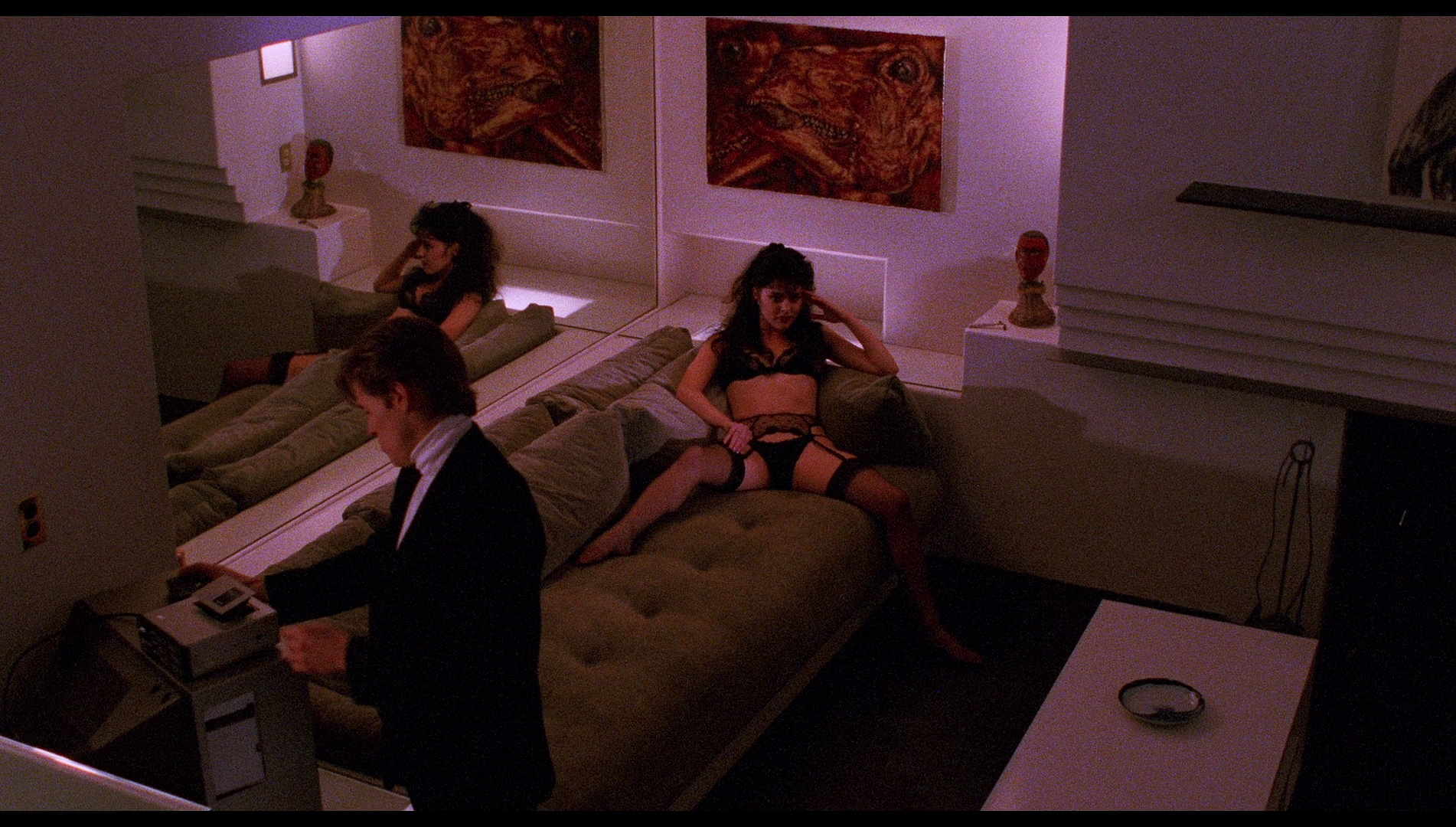
FOX: 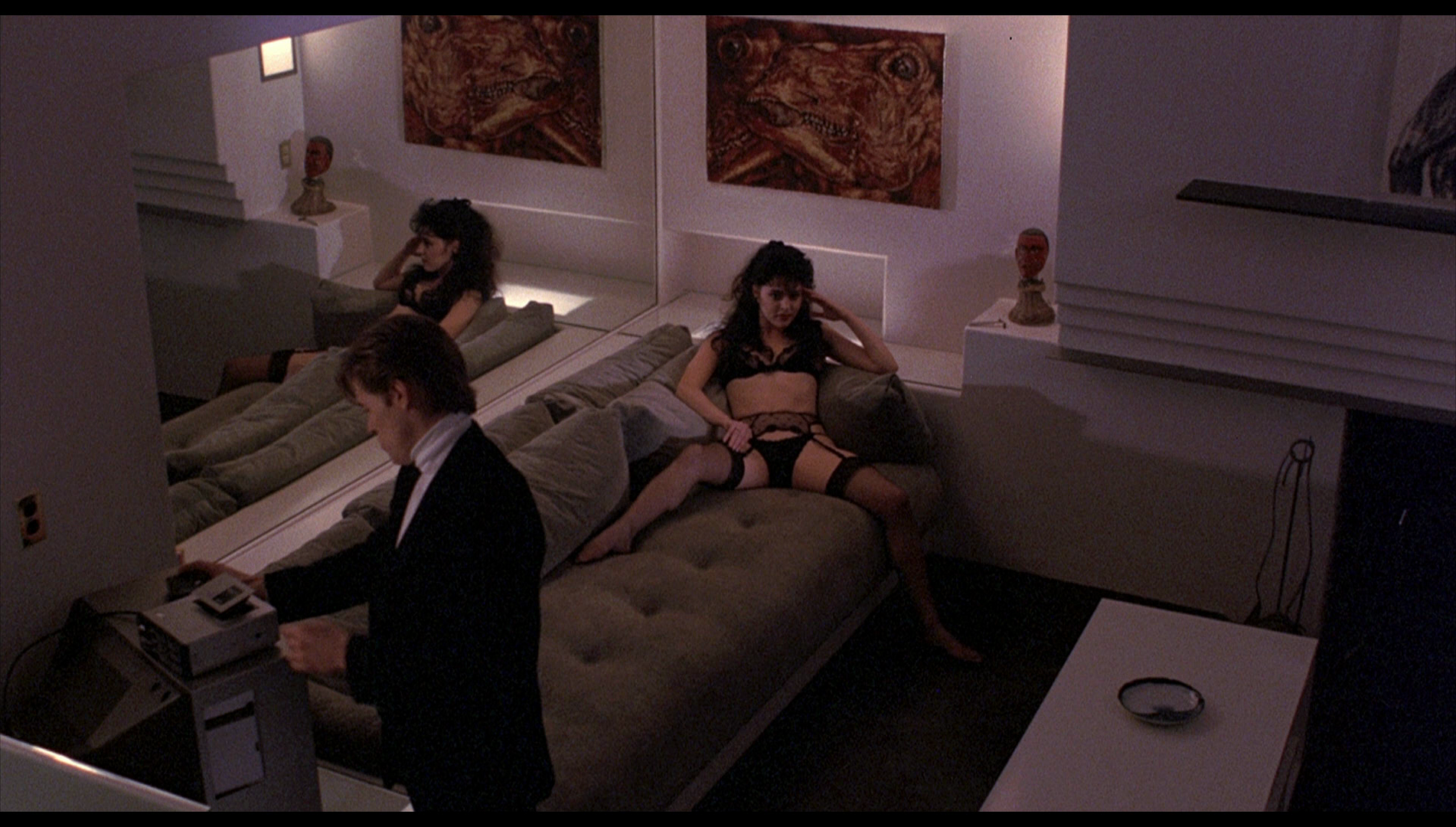
ARROW: 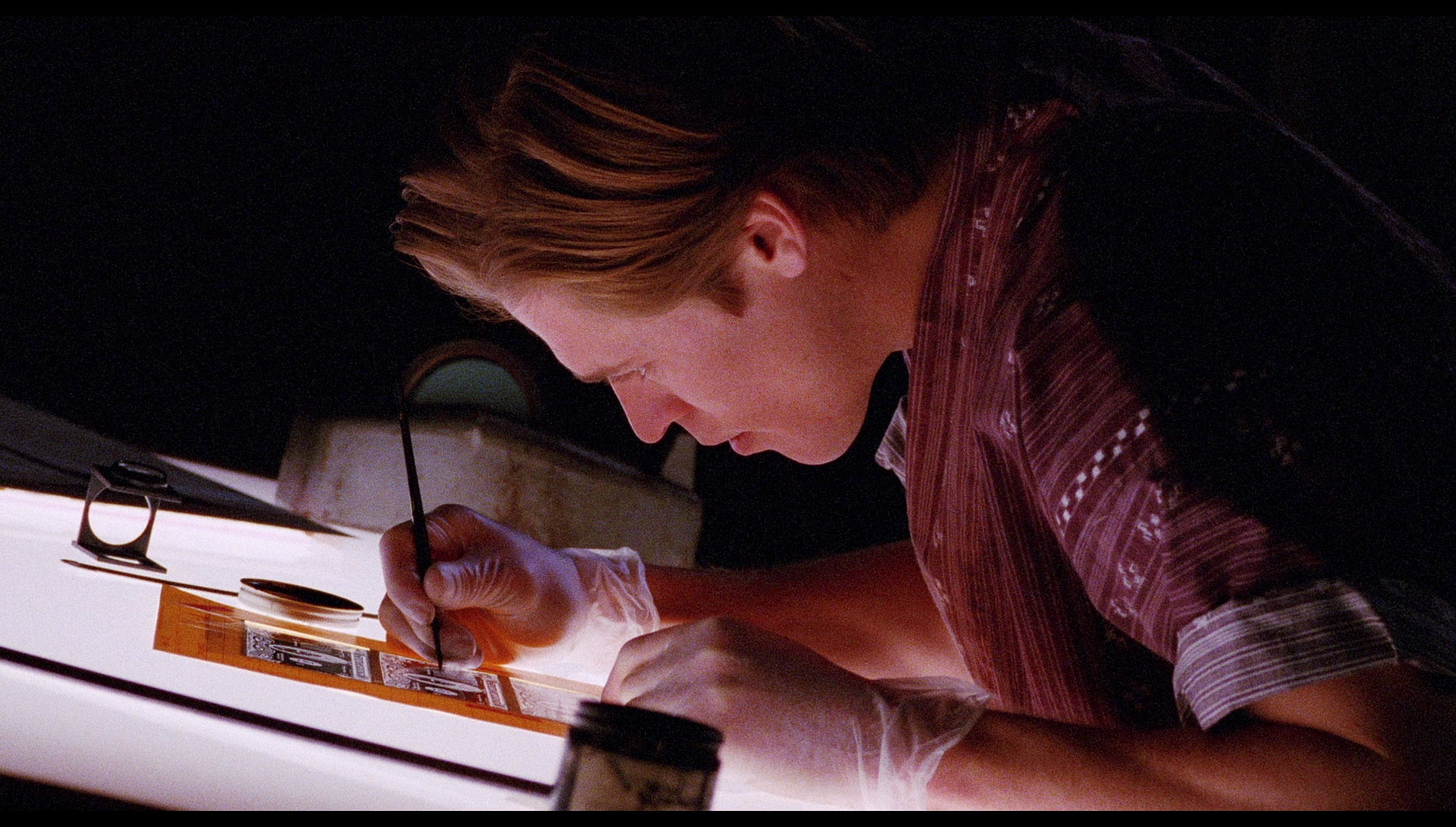
FOX: 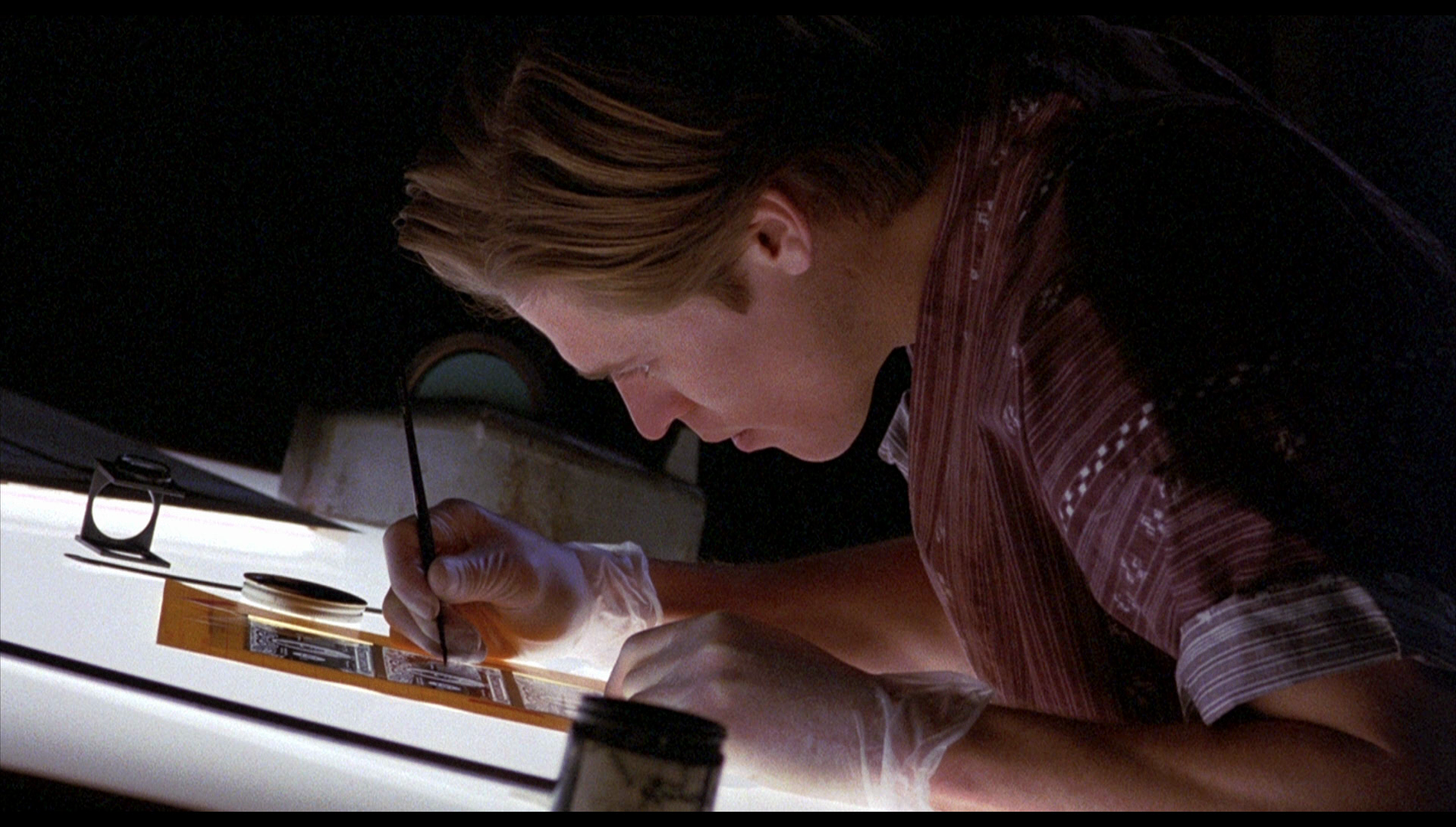
ARROW: 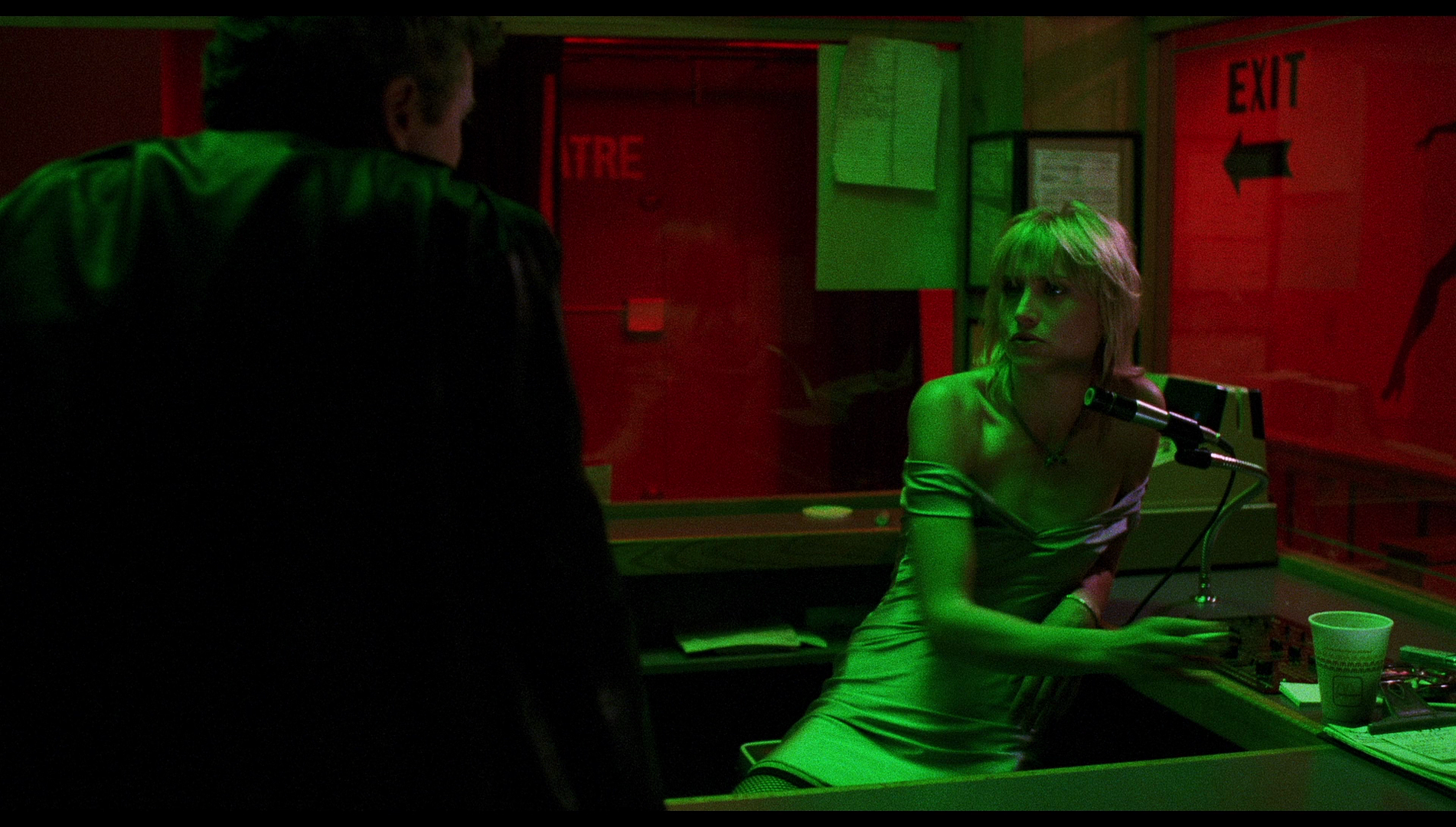
FOX: 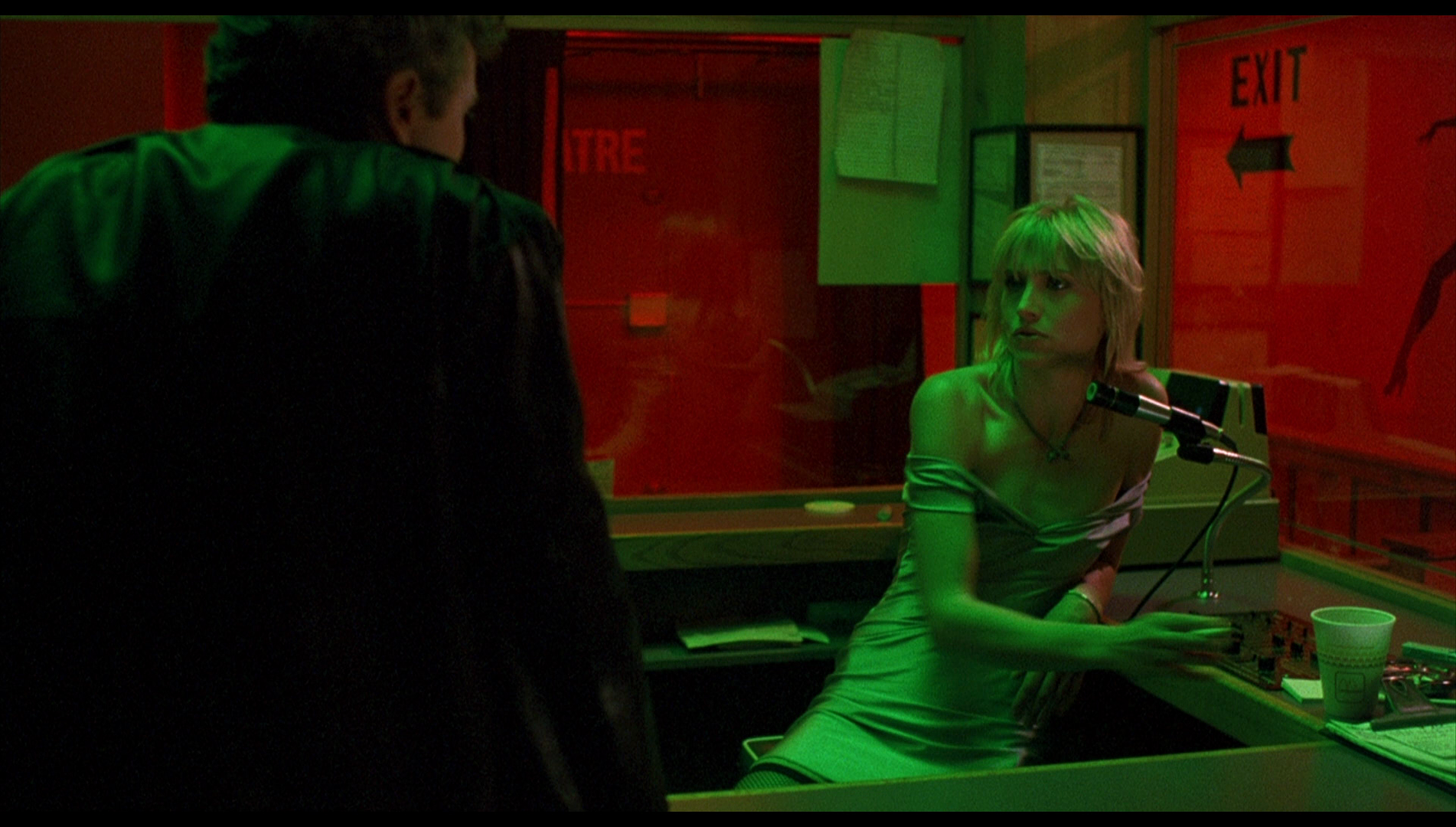
ARROW: 
FOX: 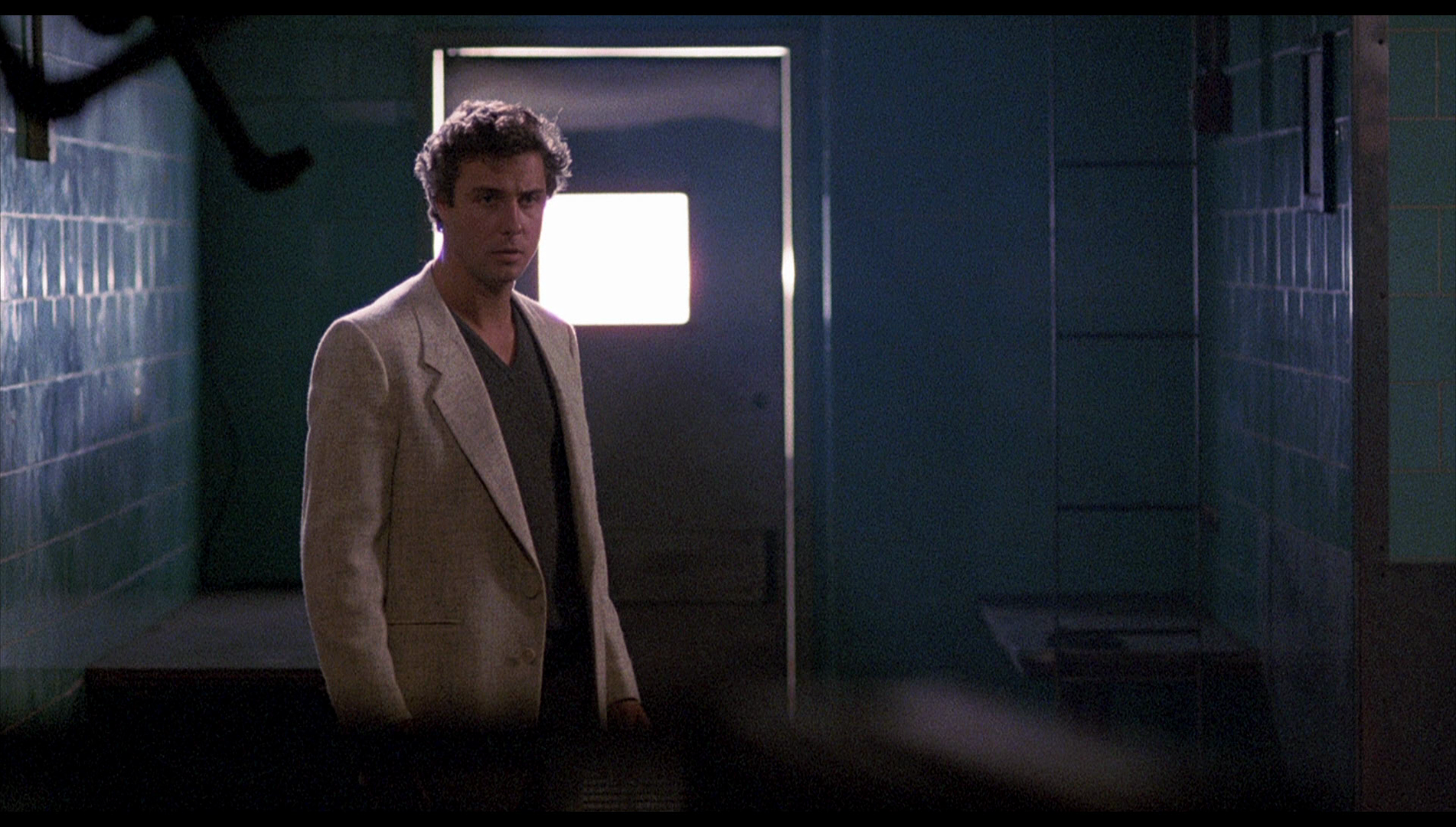
ARROW: 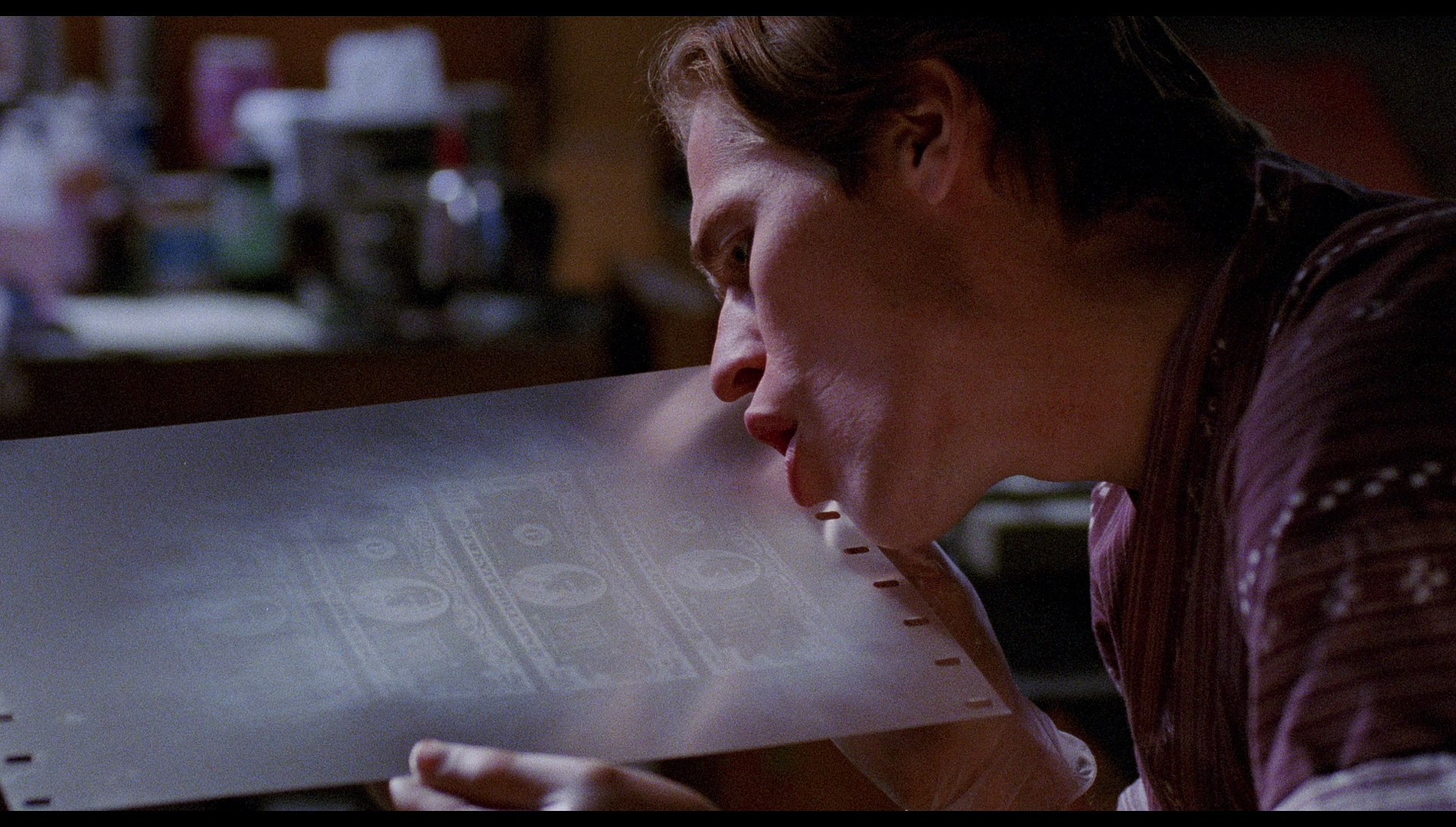
FOX: 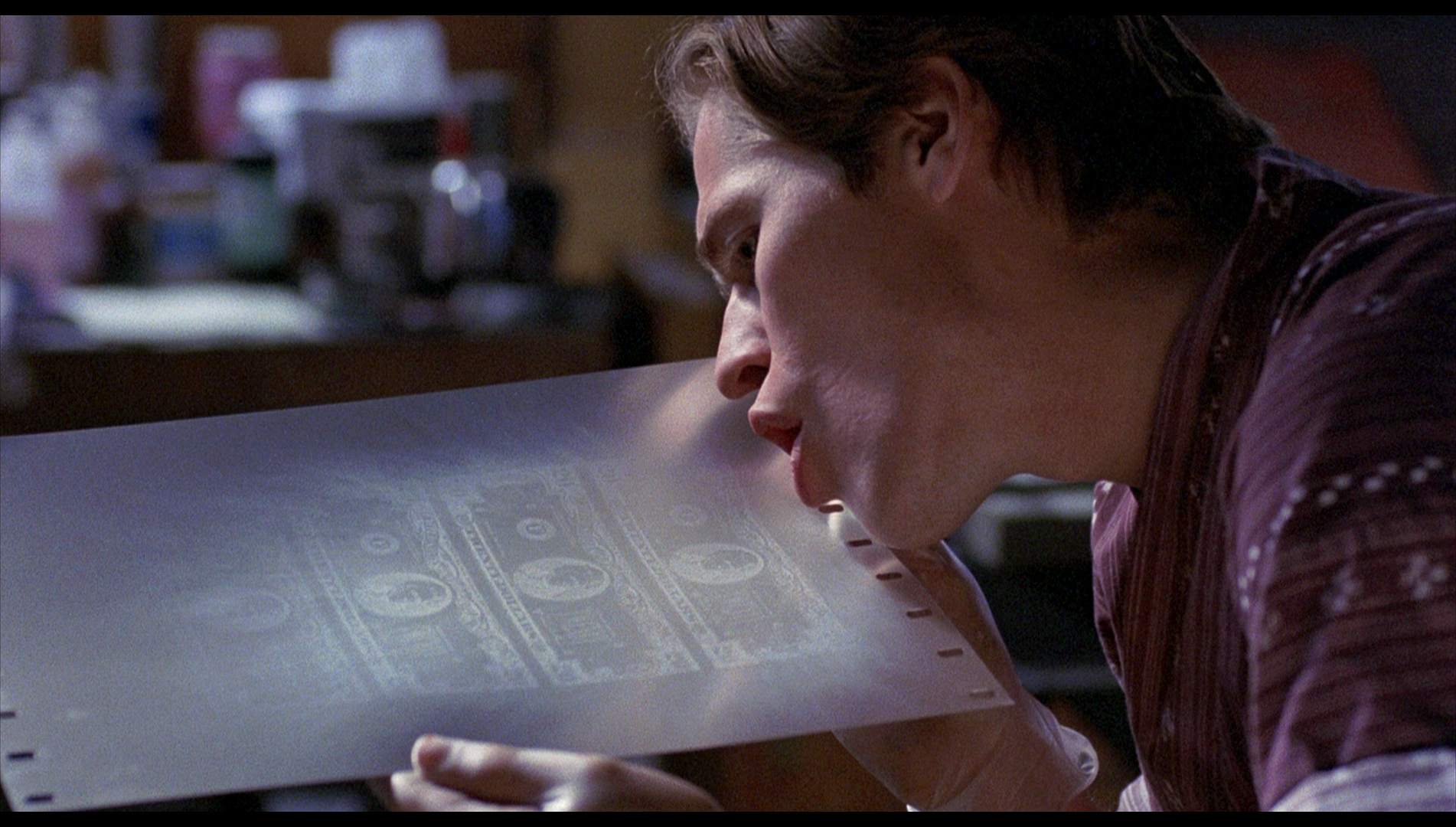
ARROW: 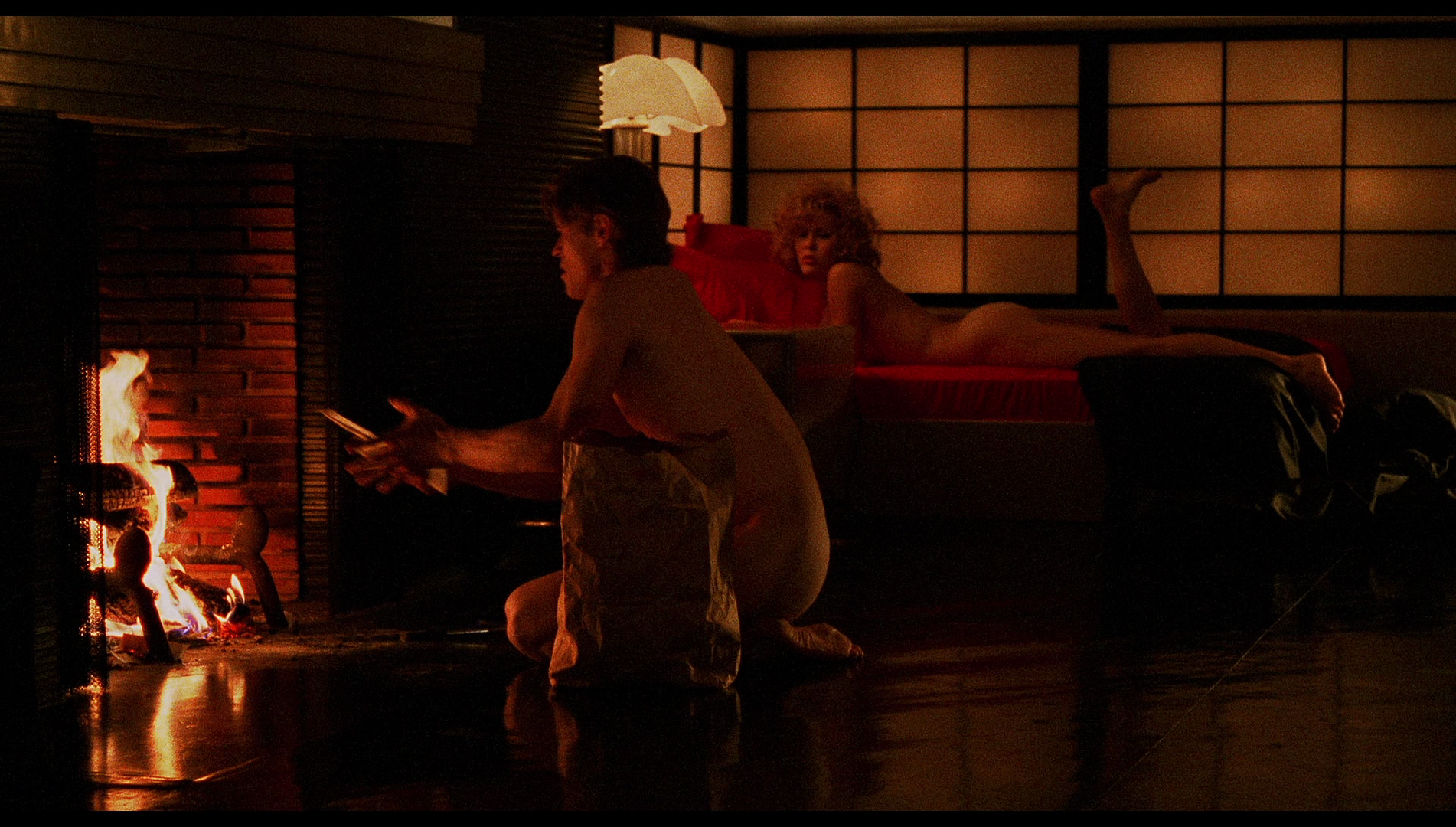
FOX: 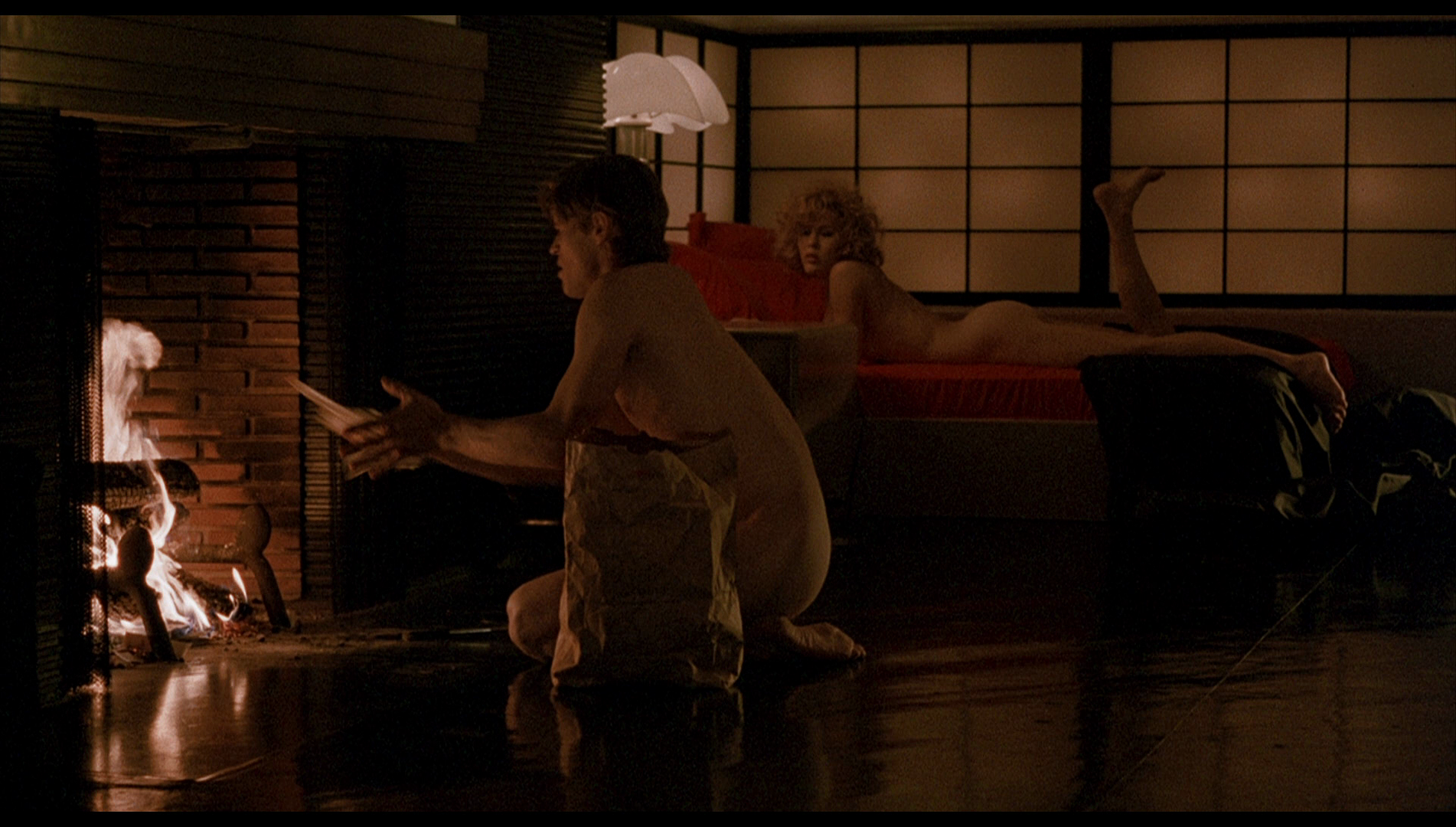
FURTHER SCREEN GRABS FROM ARROW’S NEW BLU-RAY RELEASE: 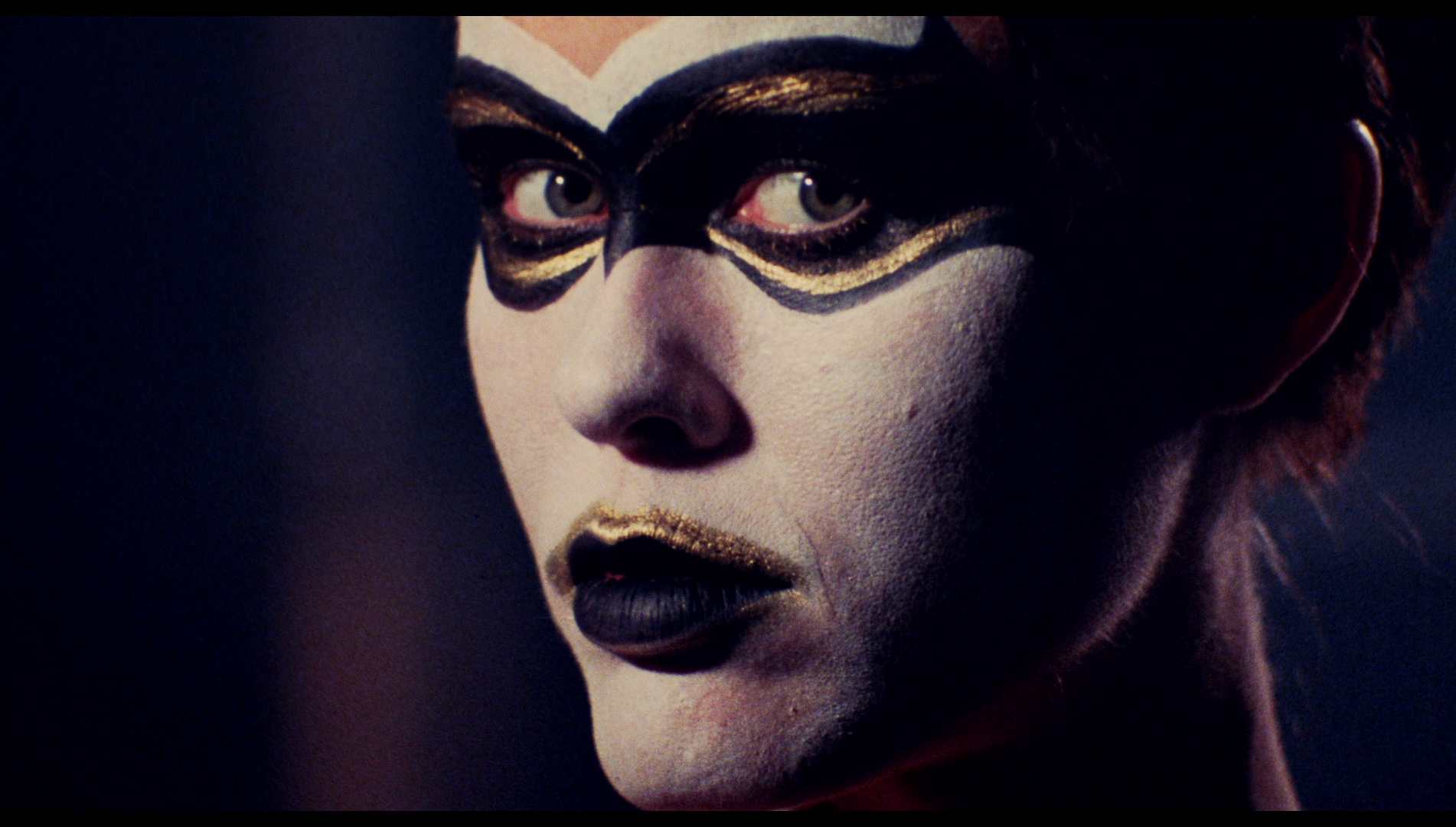

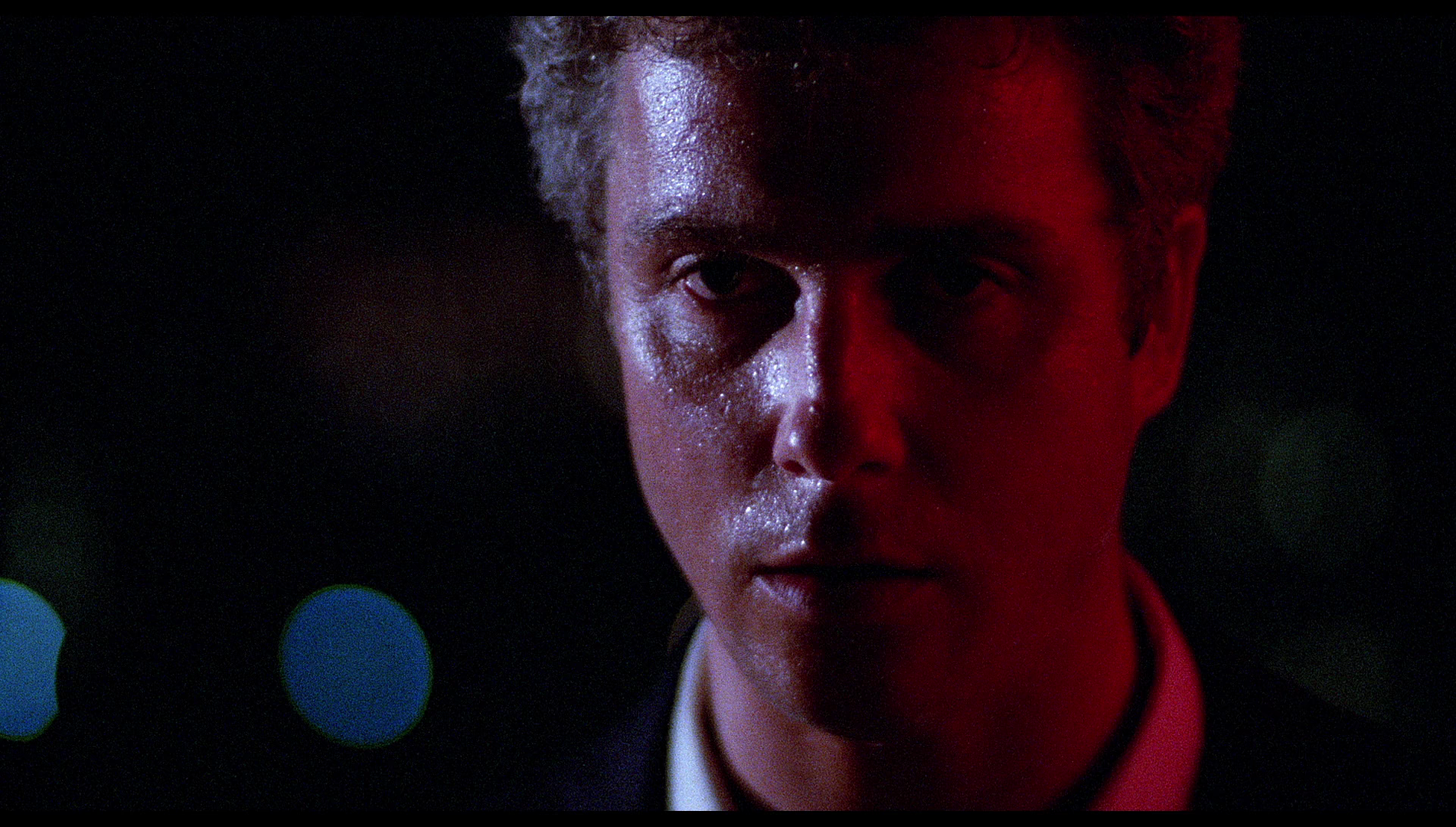
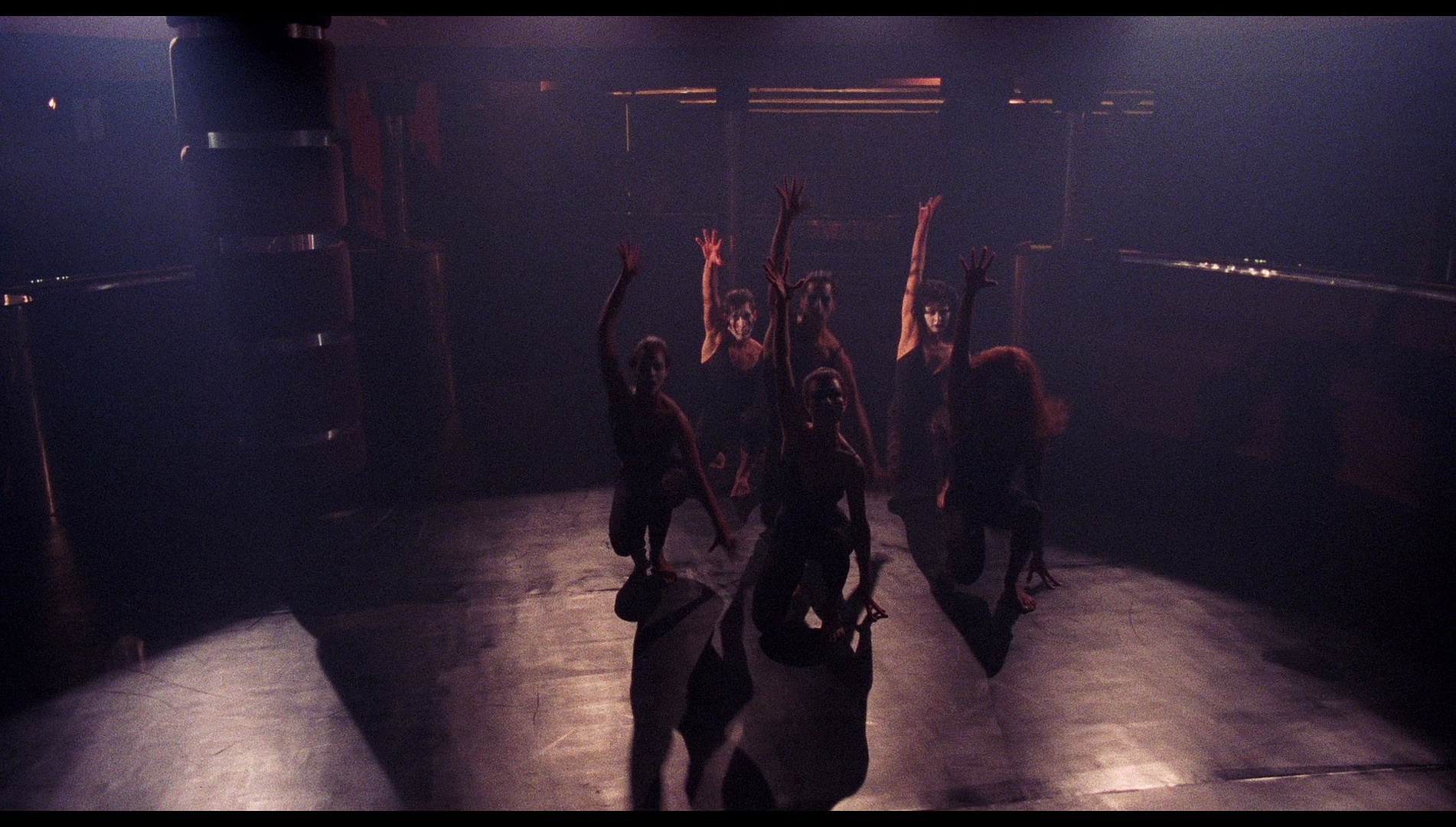
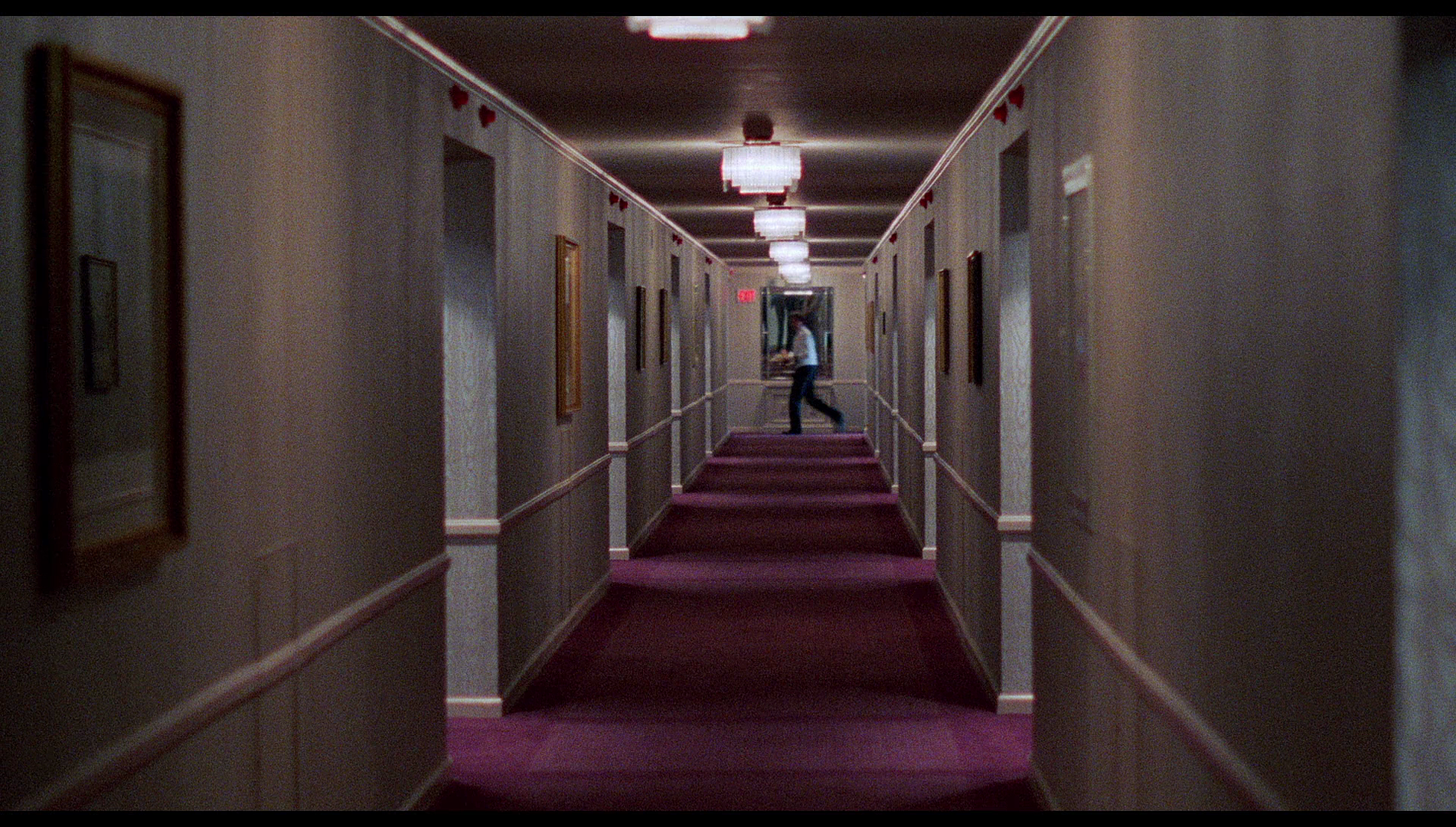
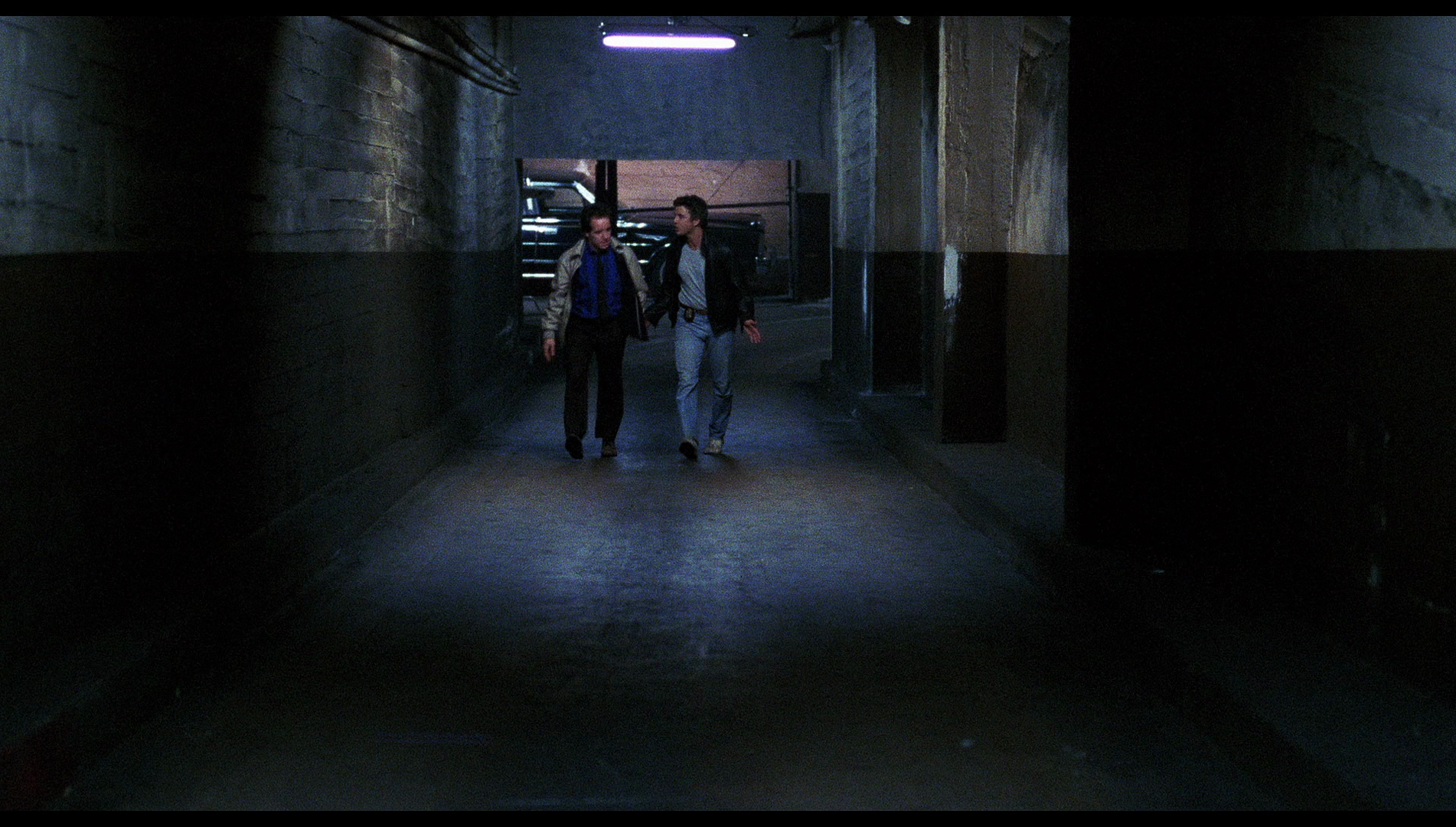
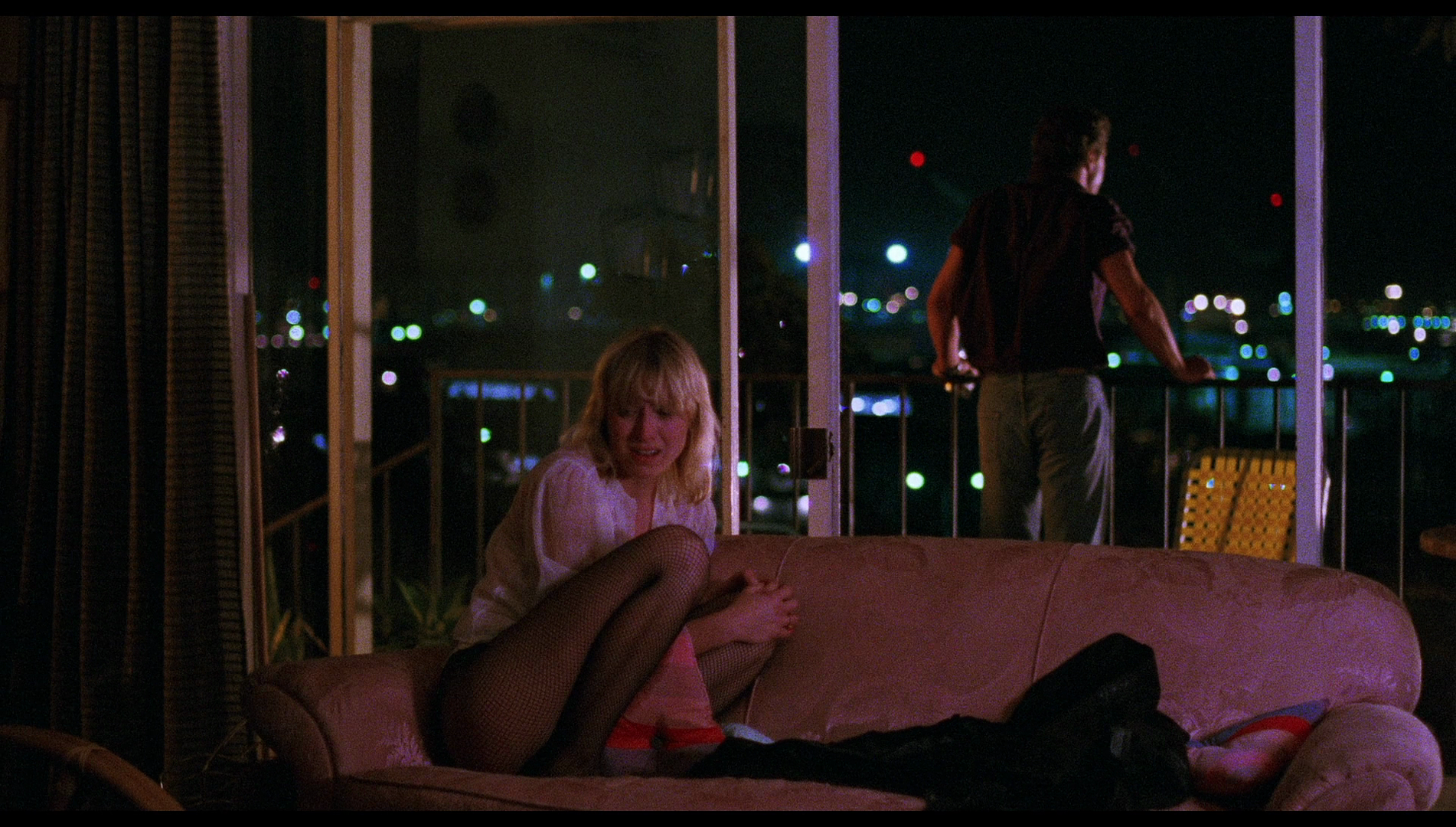




|
|||||

|